



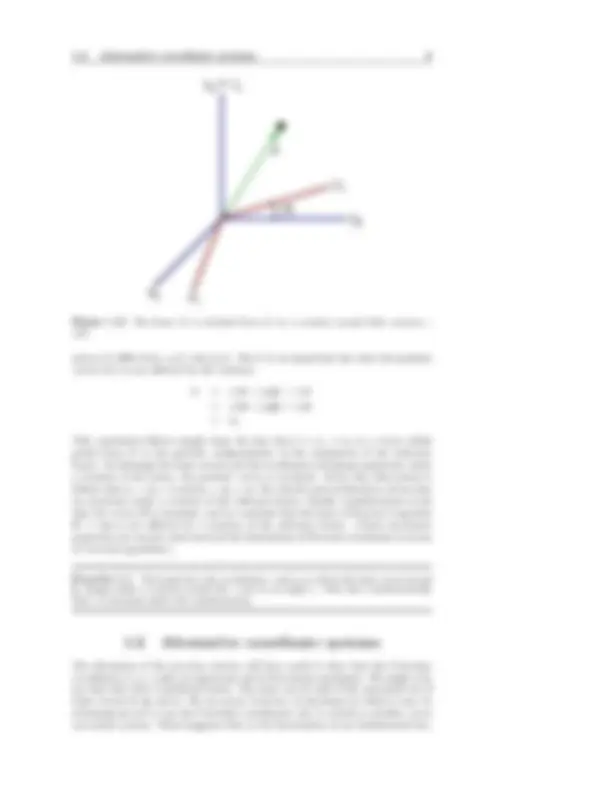
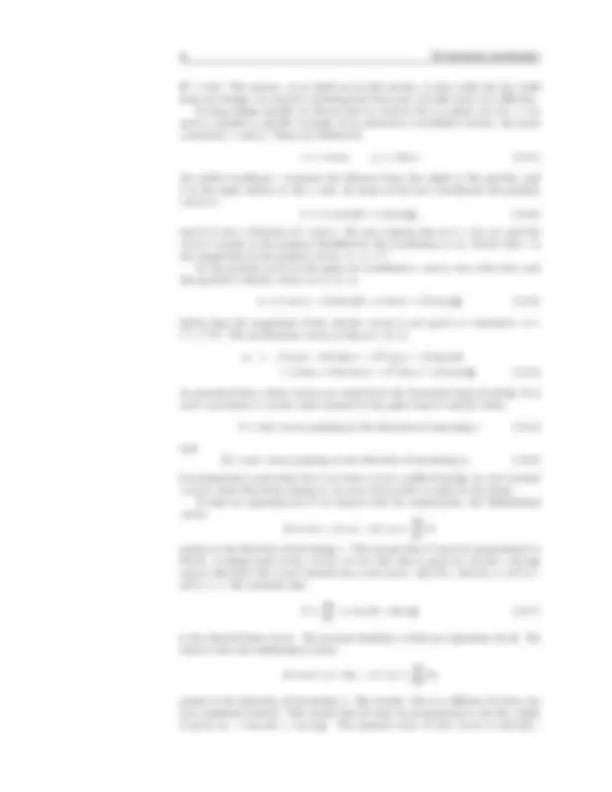
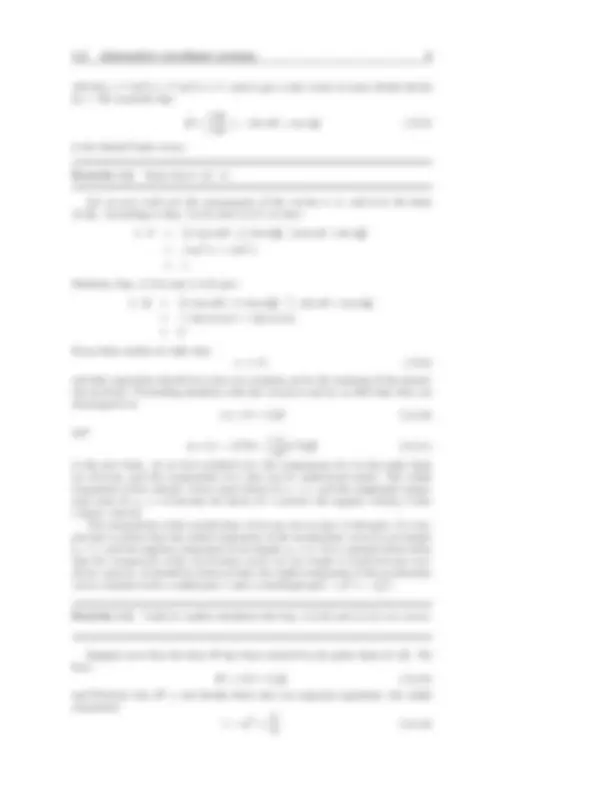
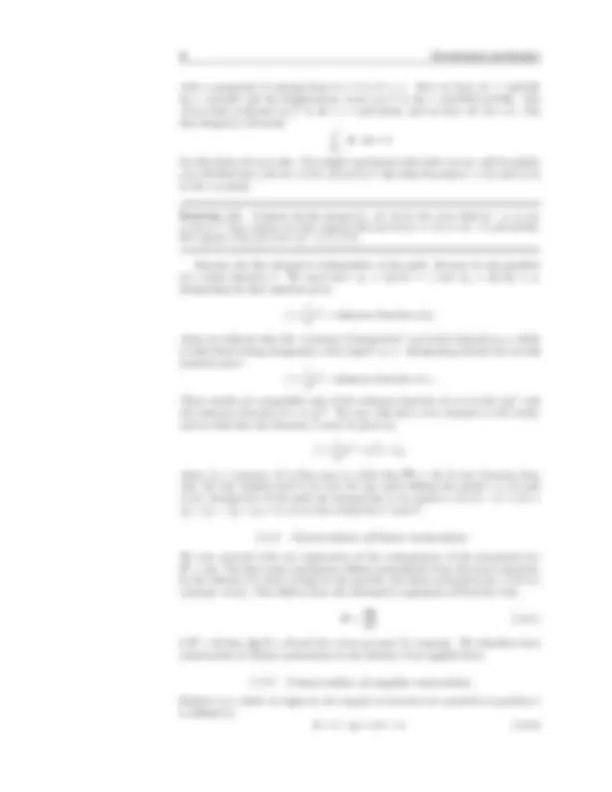
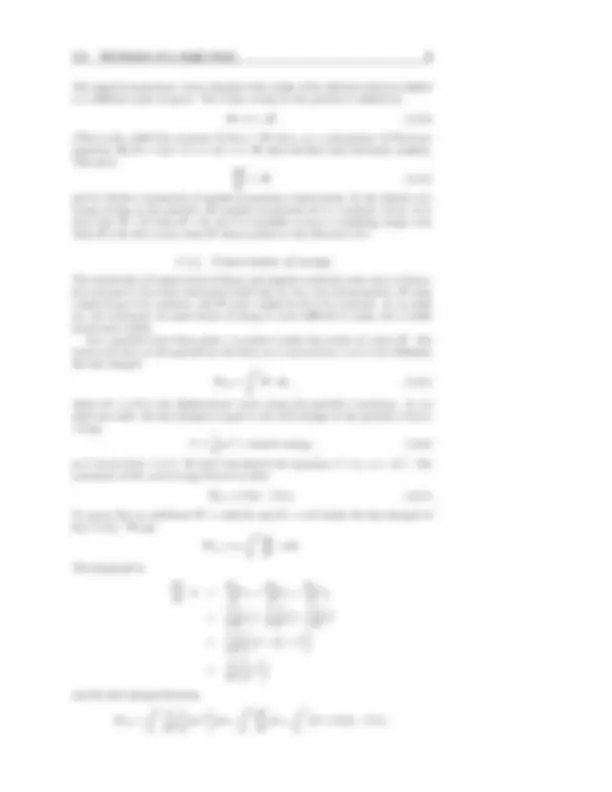
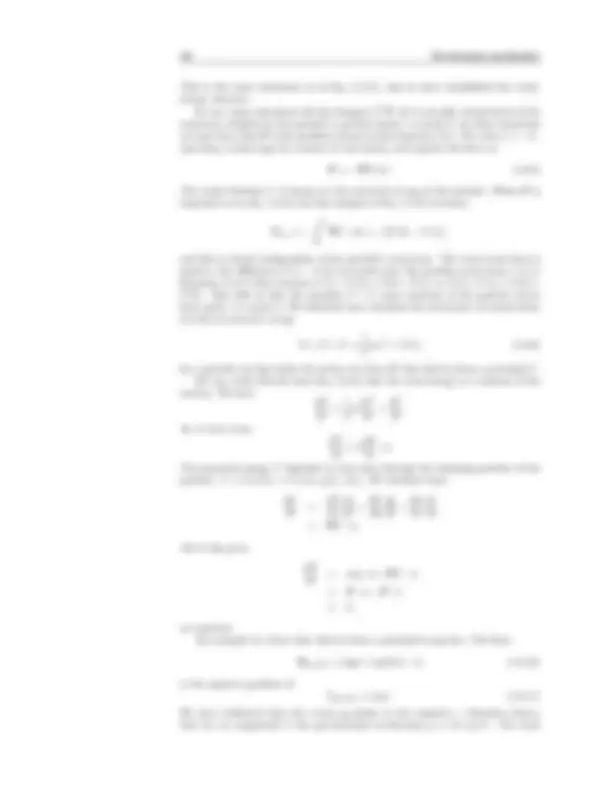
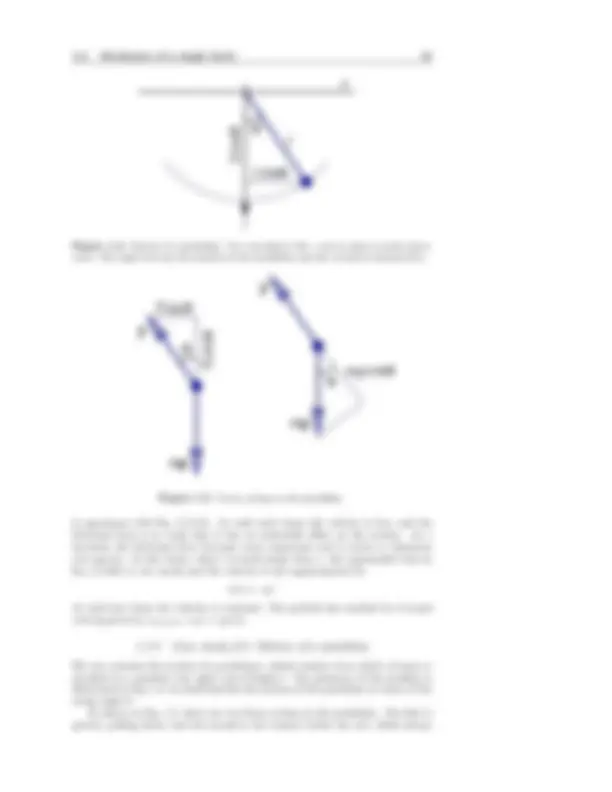
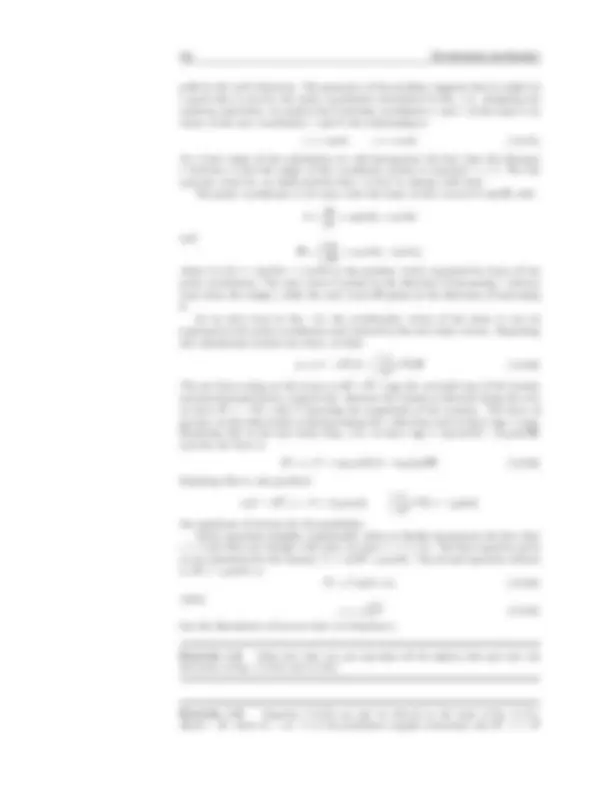
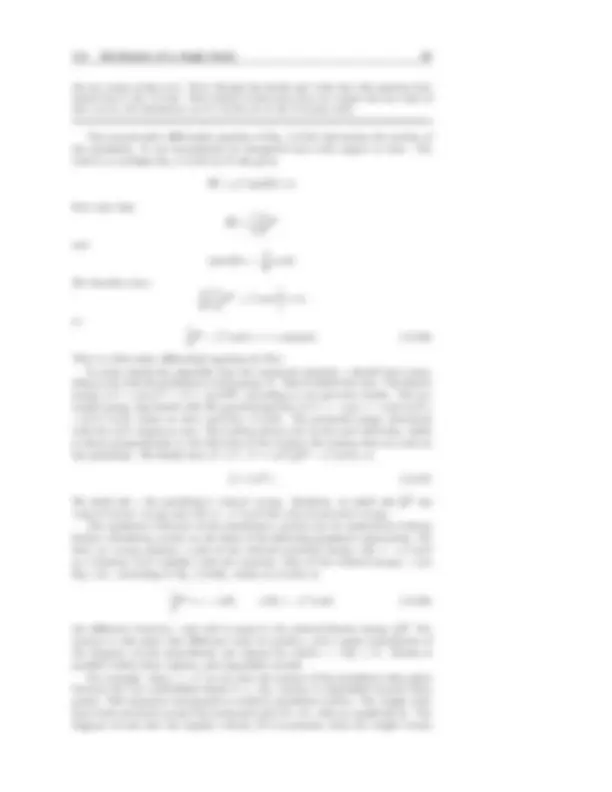
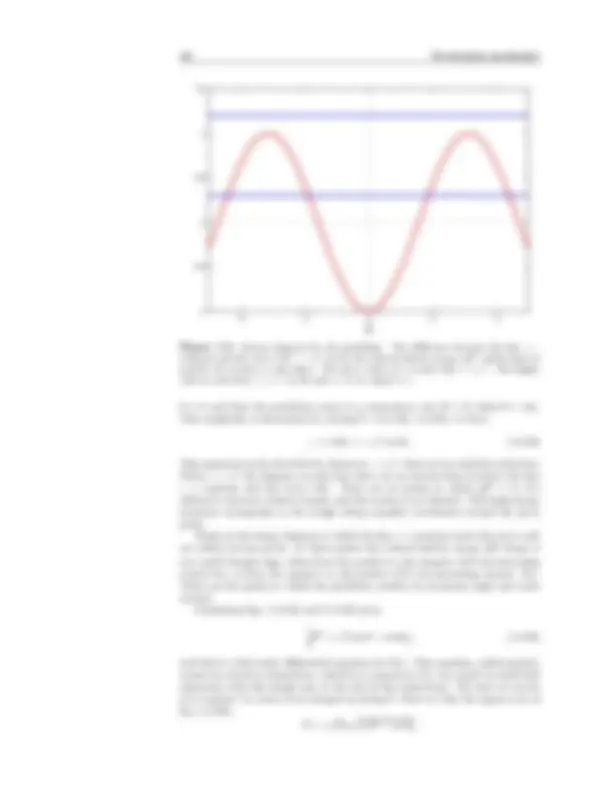
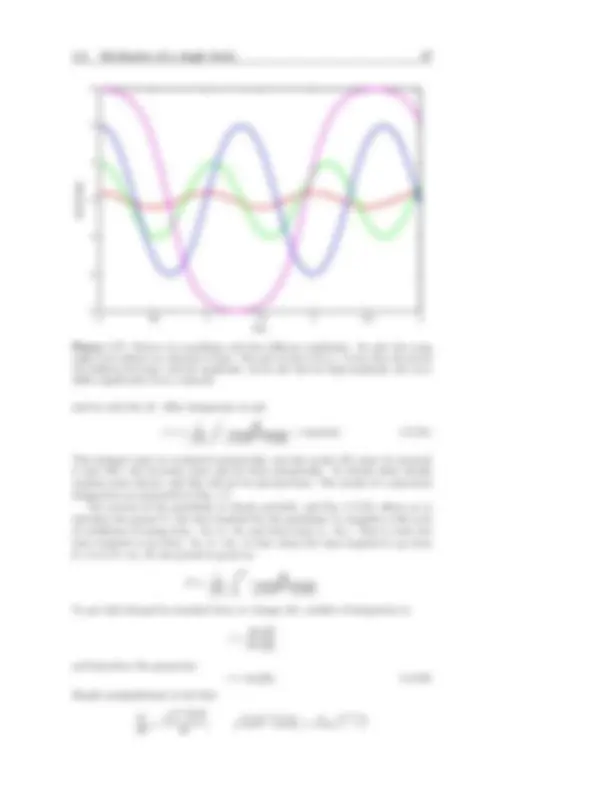

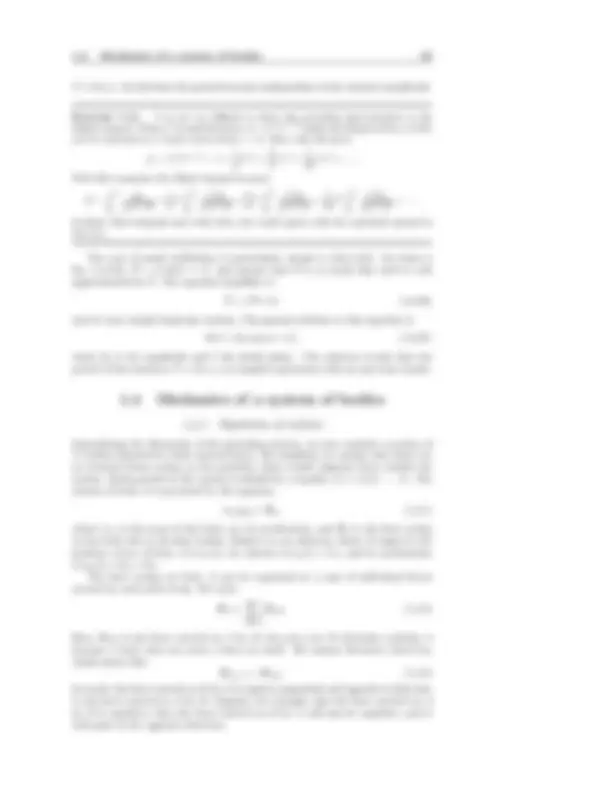
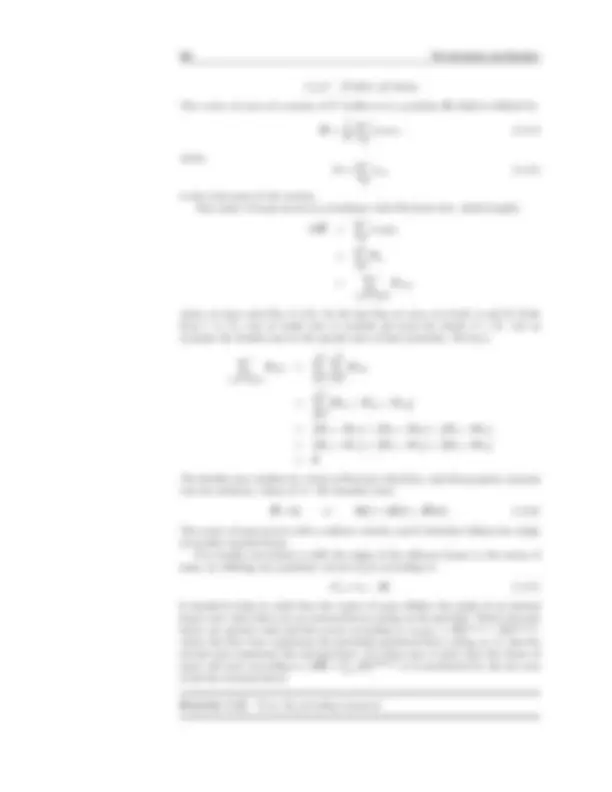
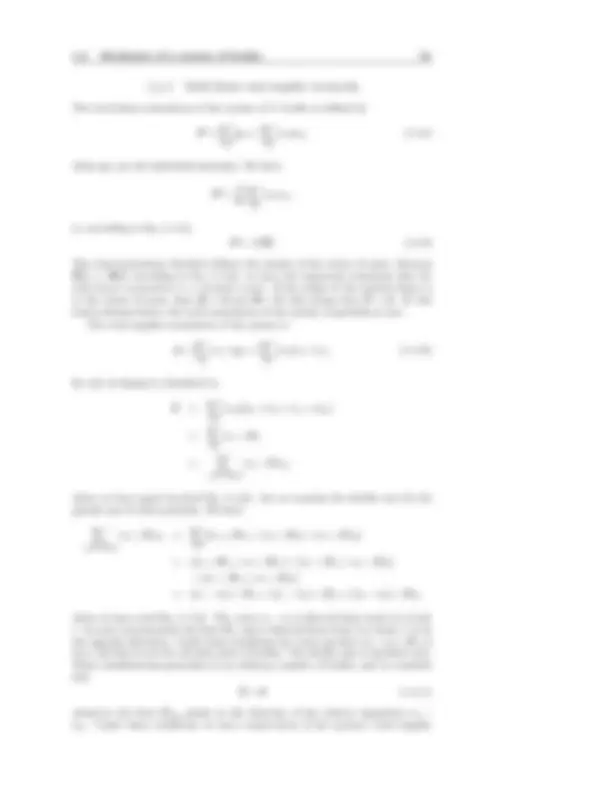
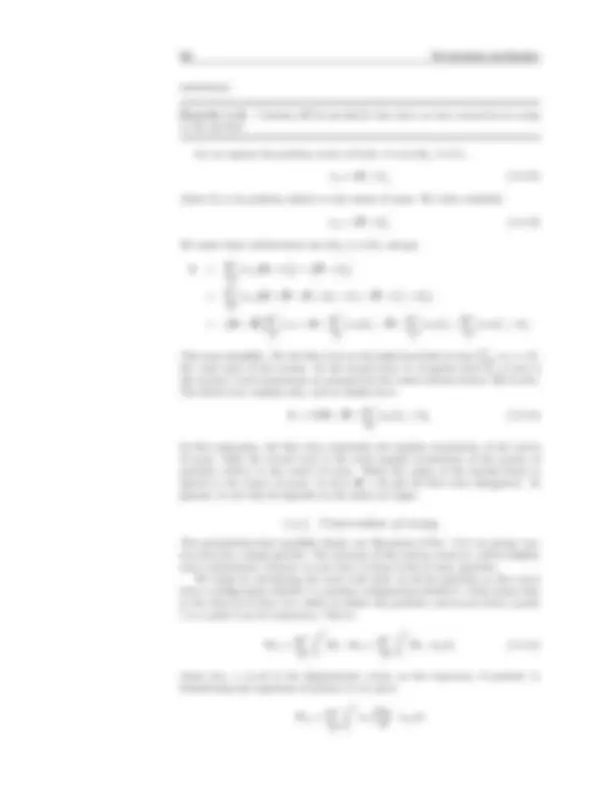
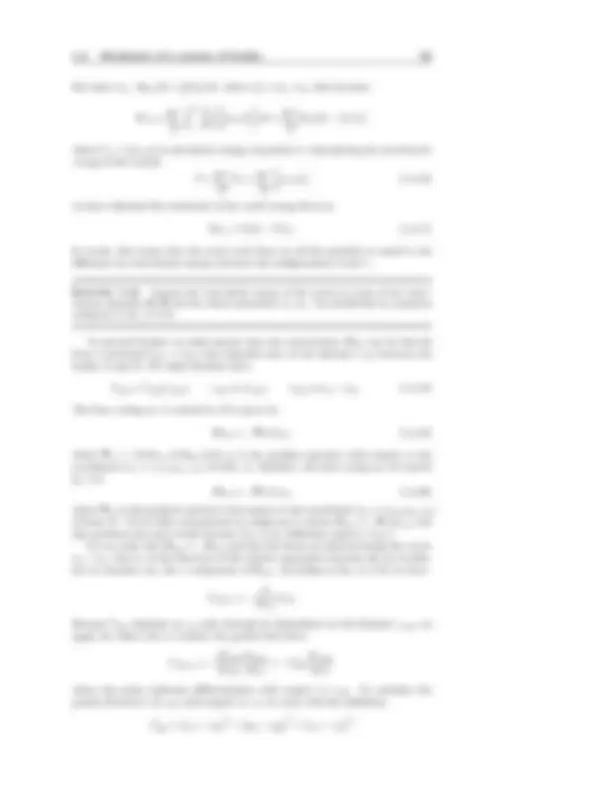
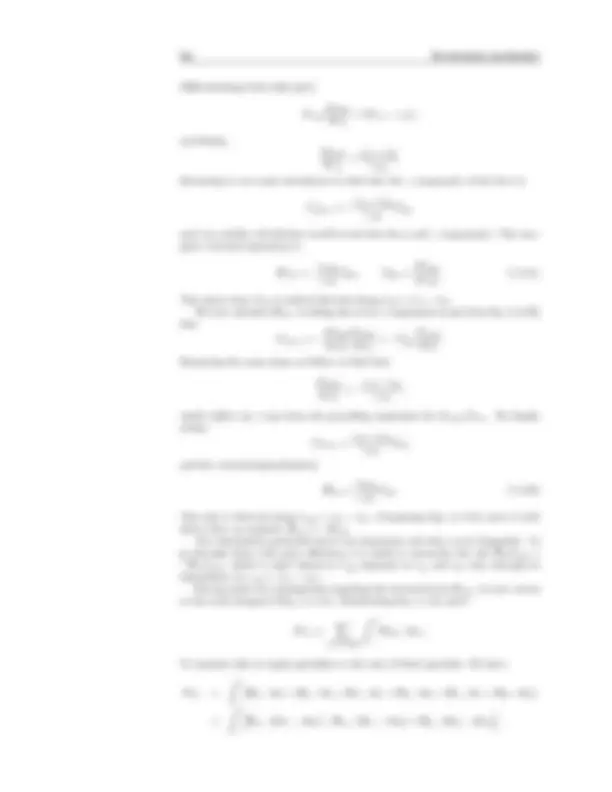
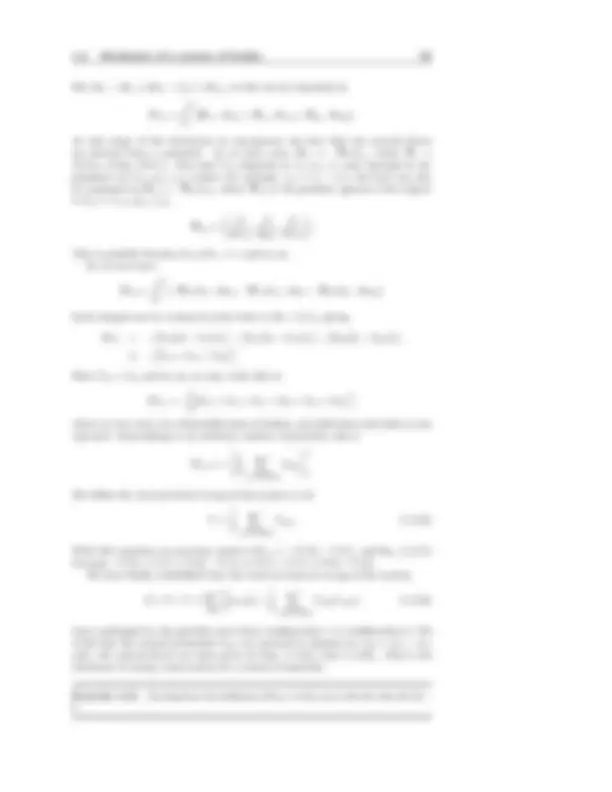
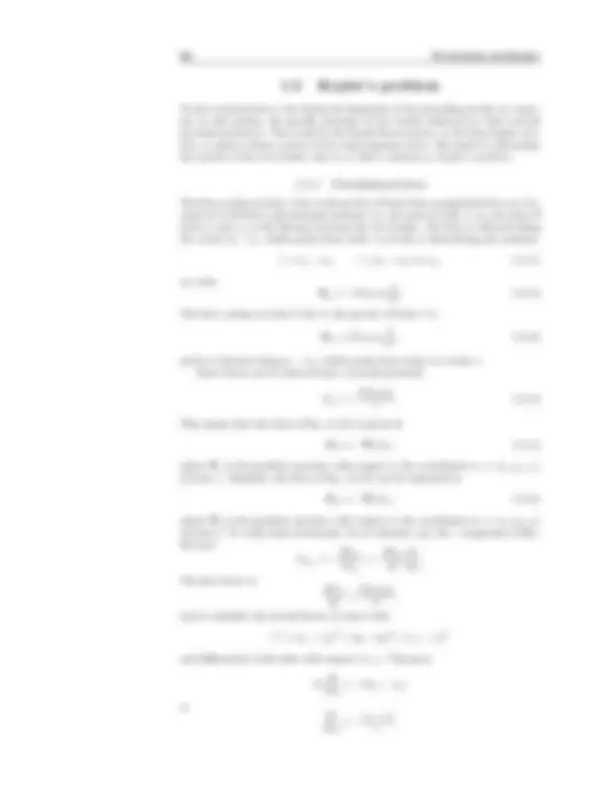
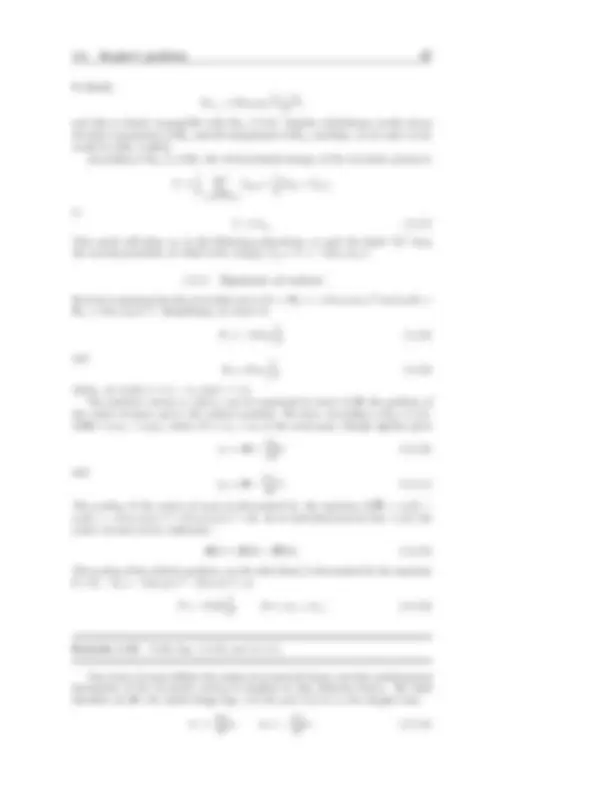
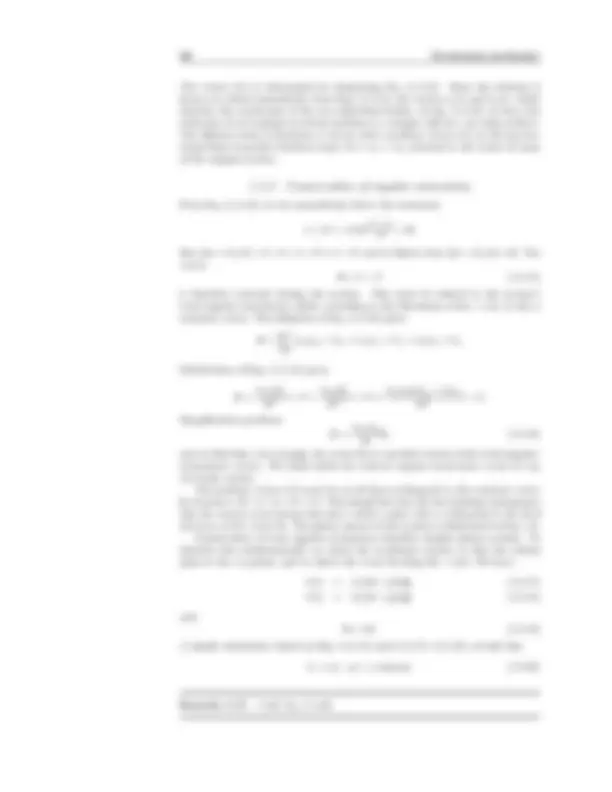
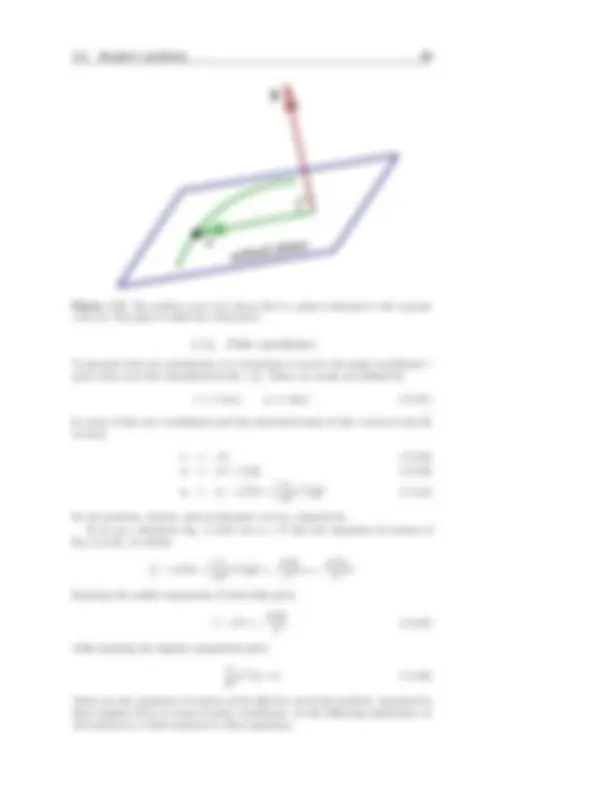
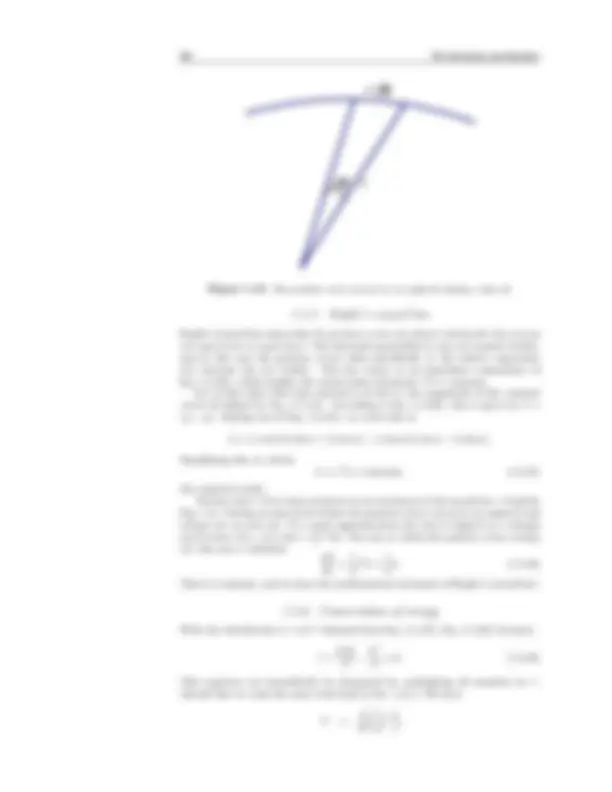
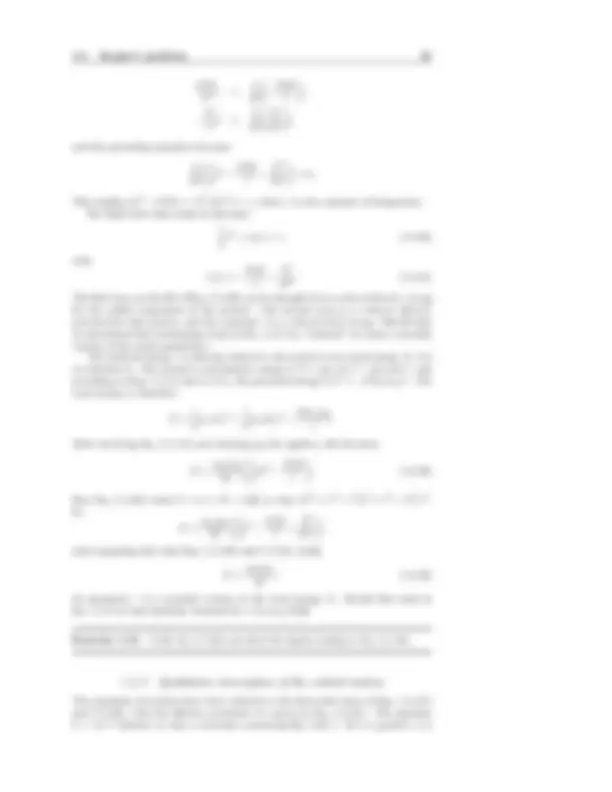
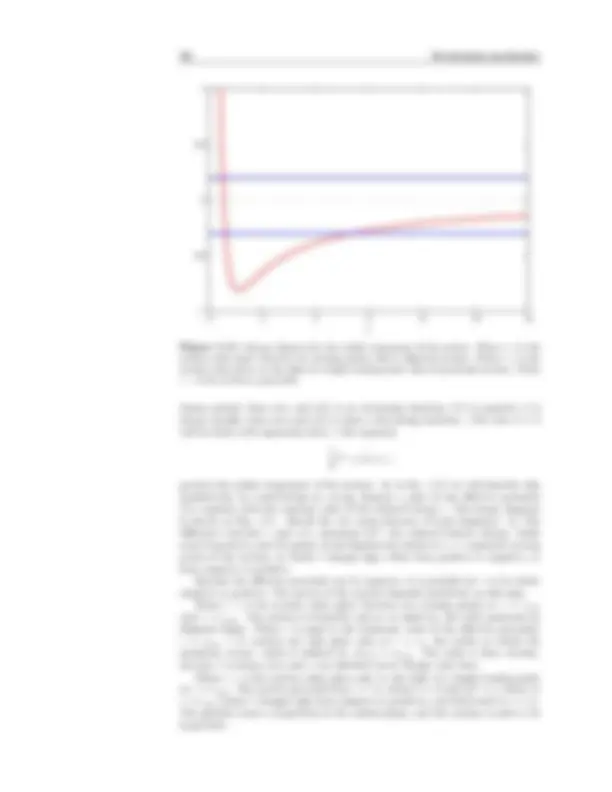
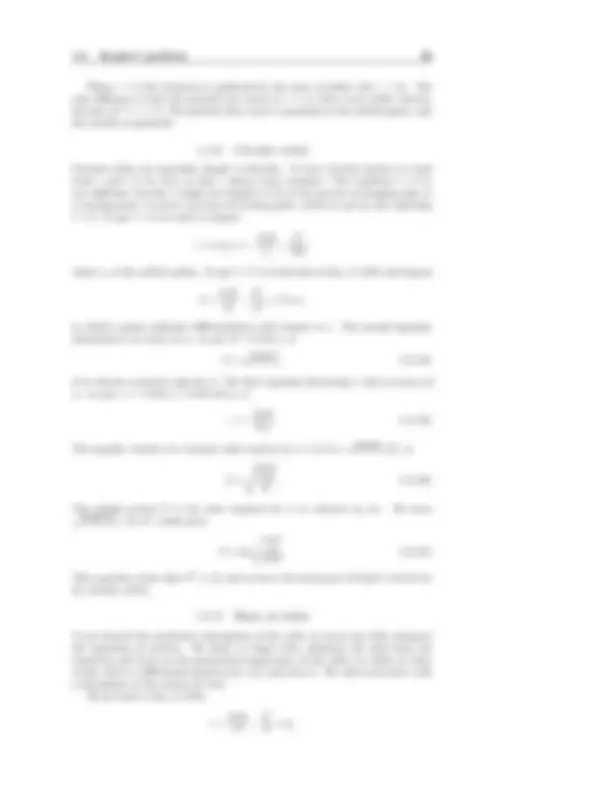
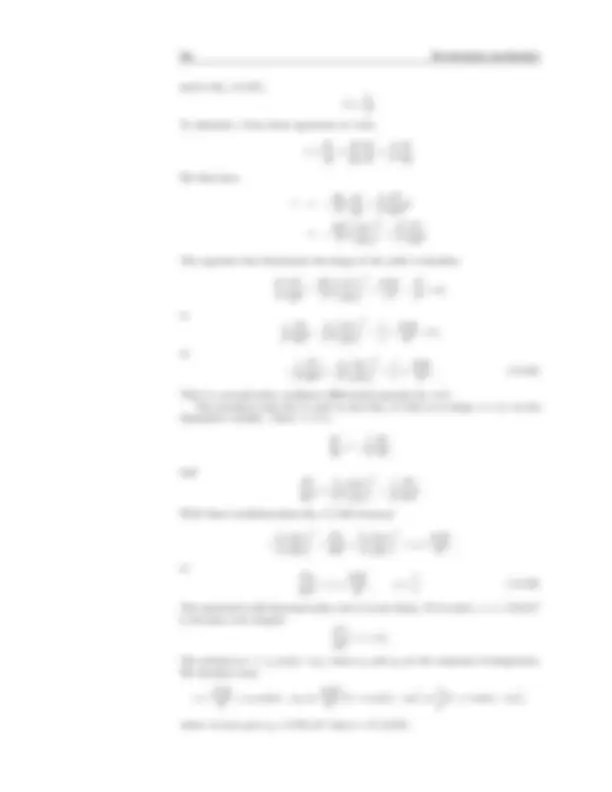

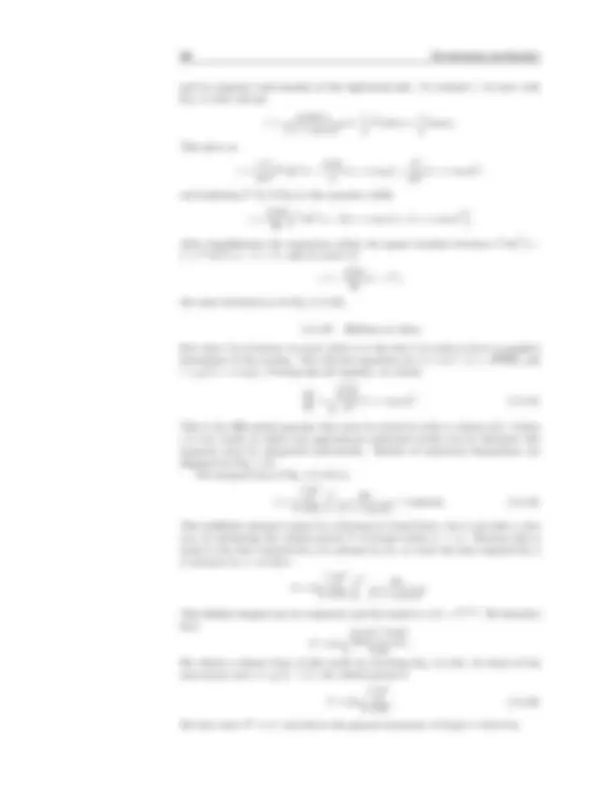
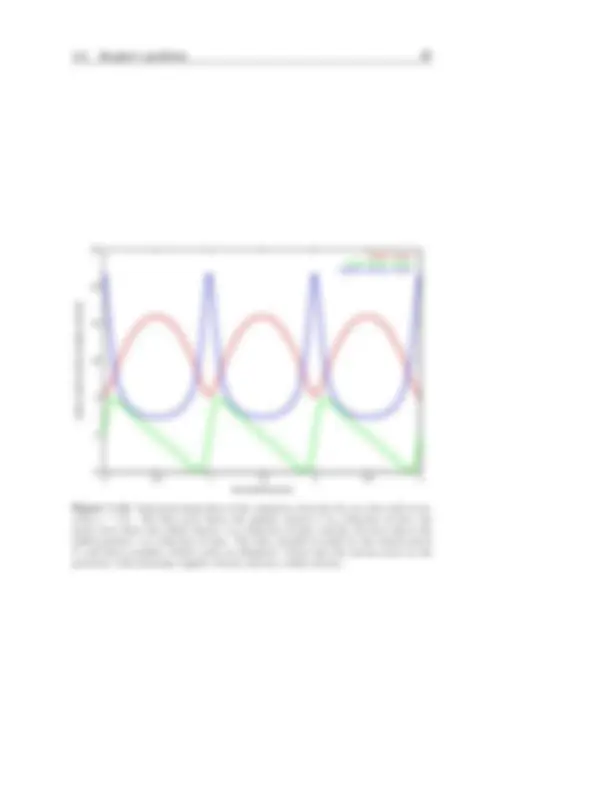
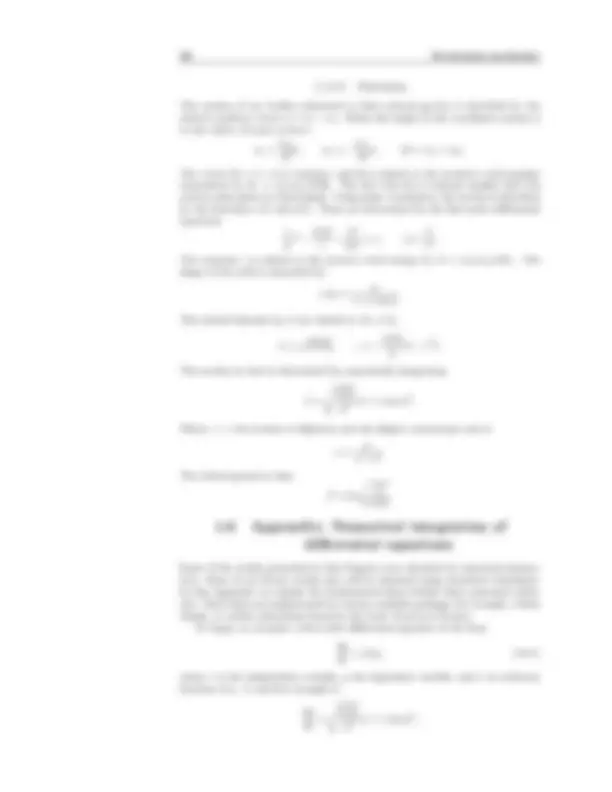
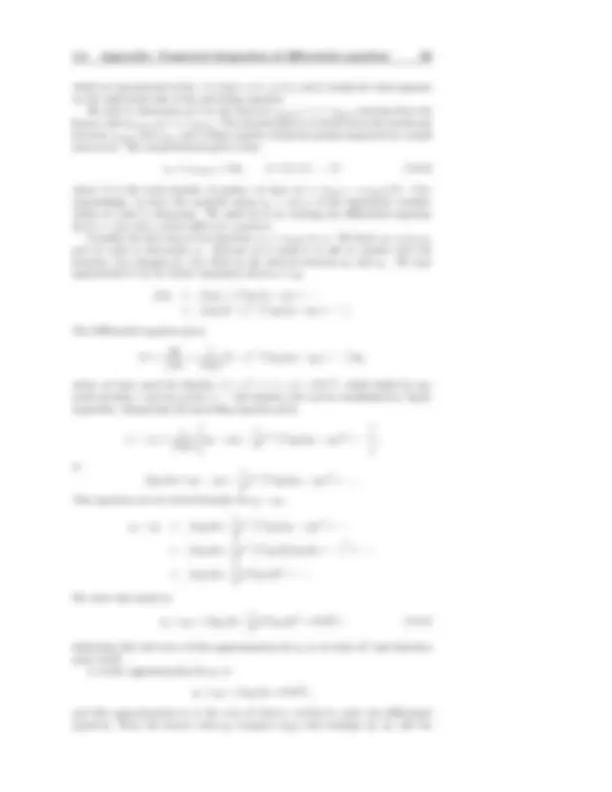
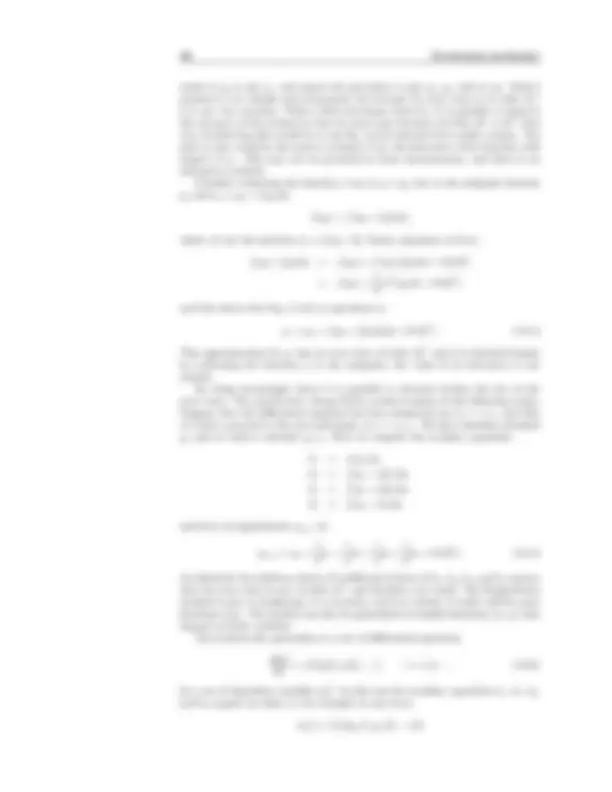
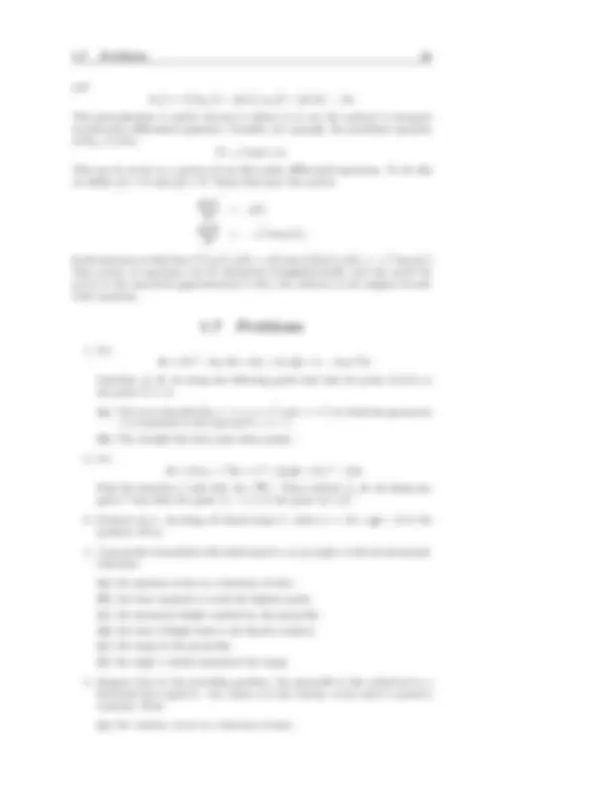

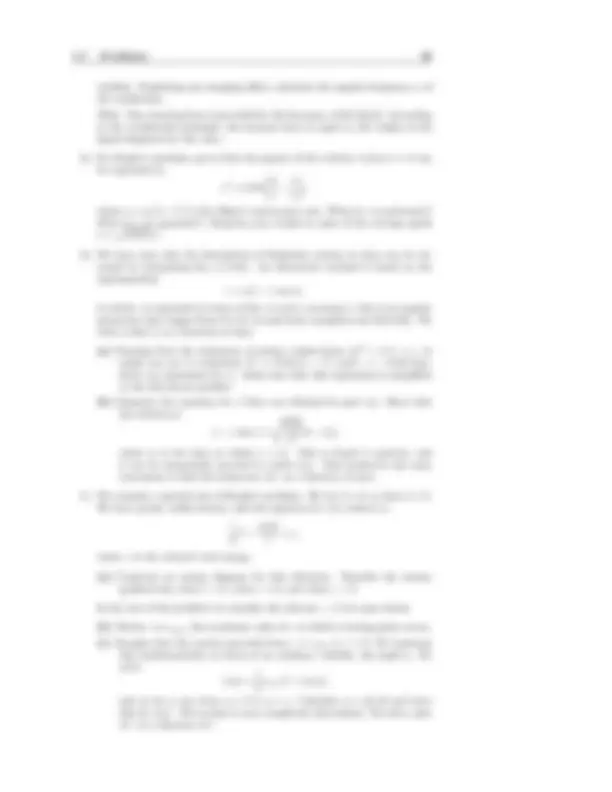
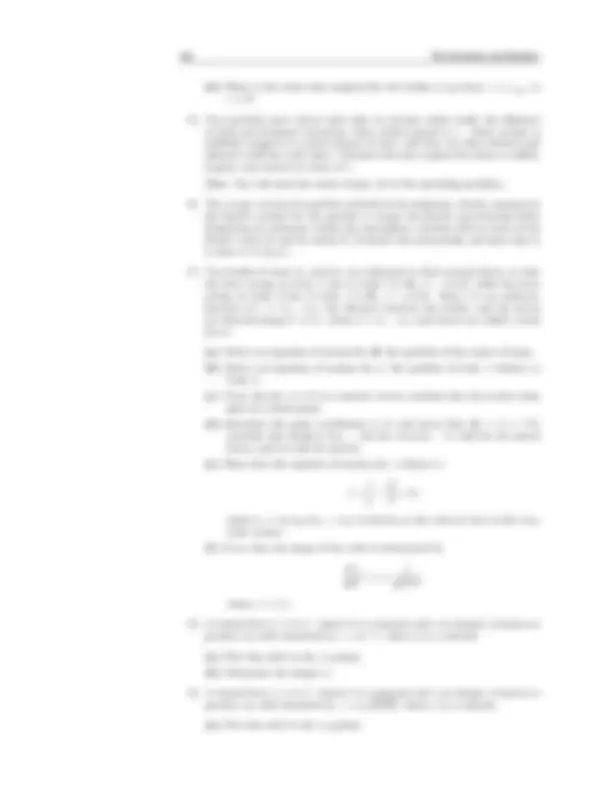
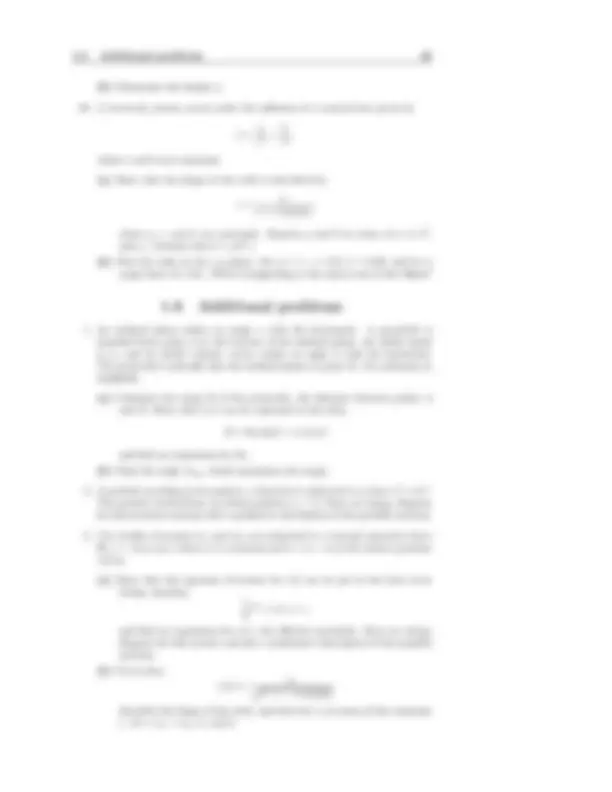

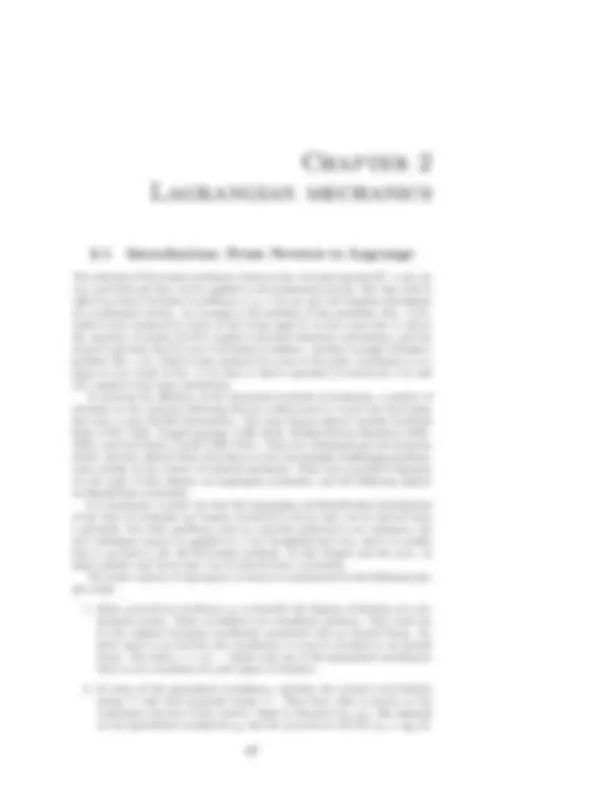
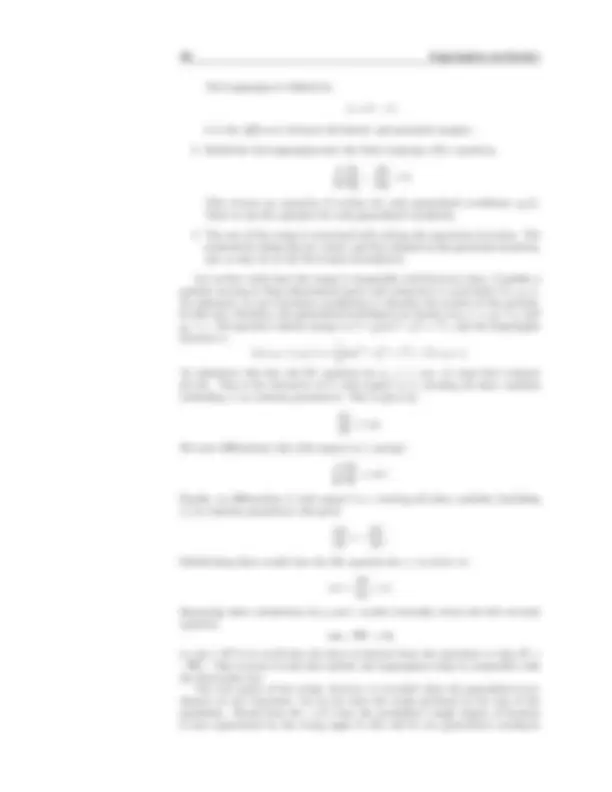
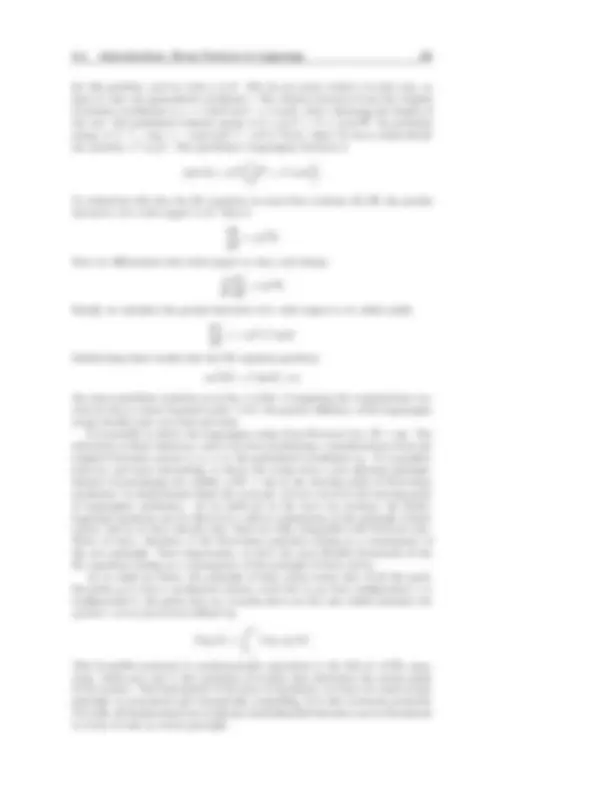
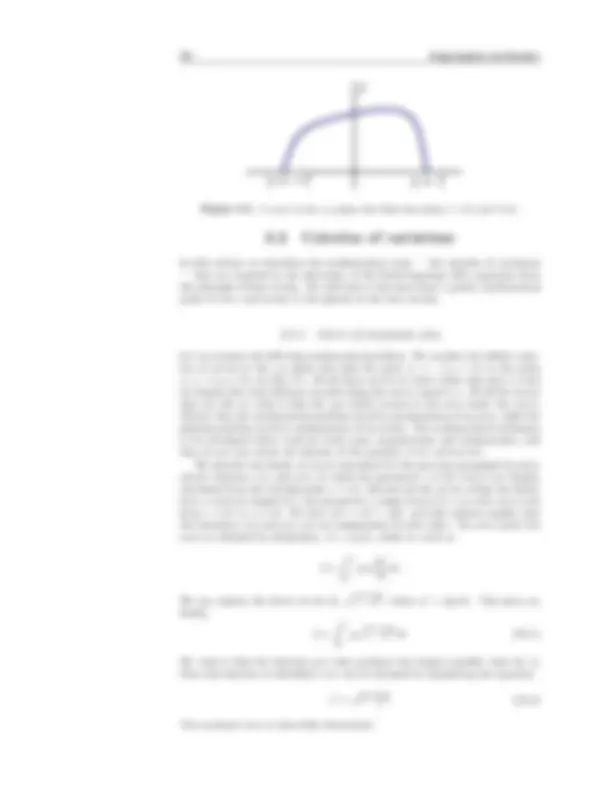
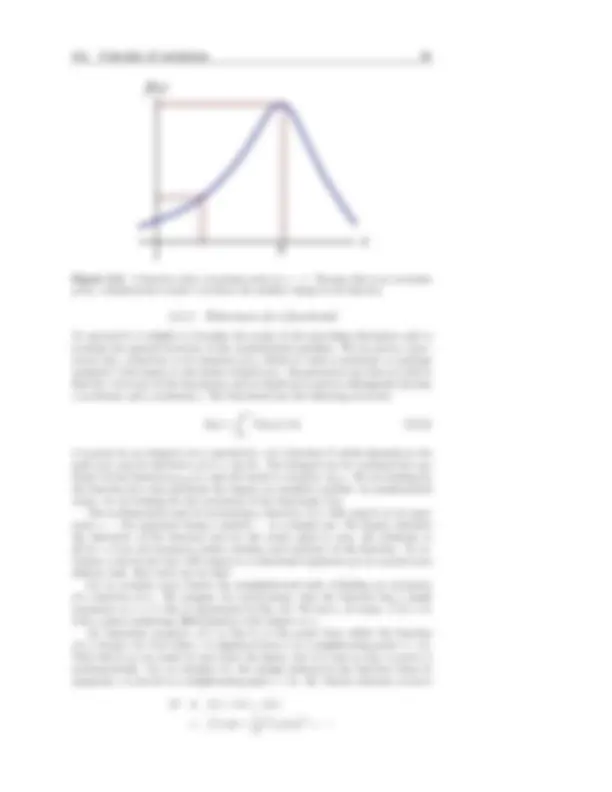
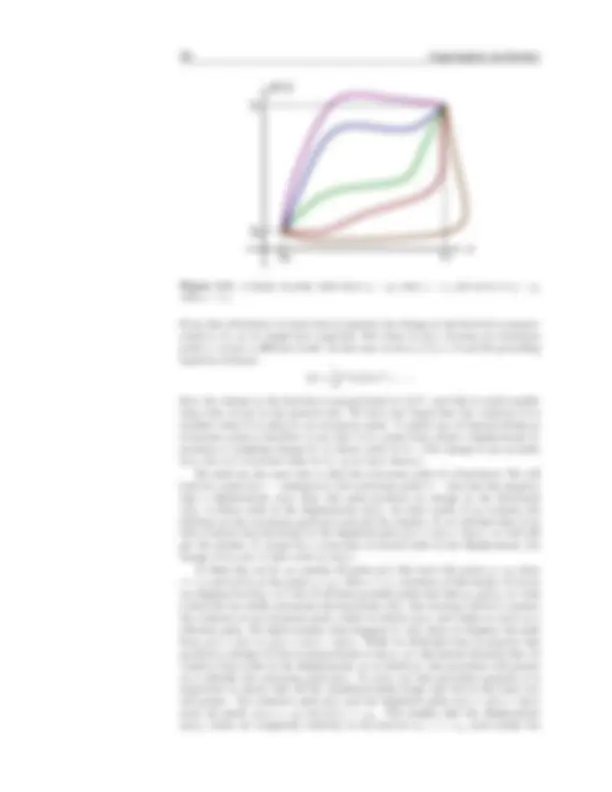
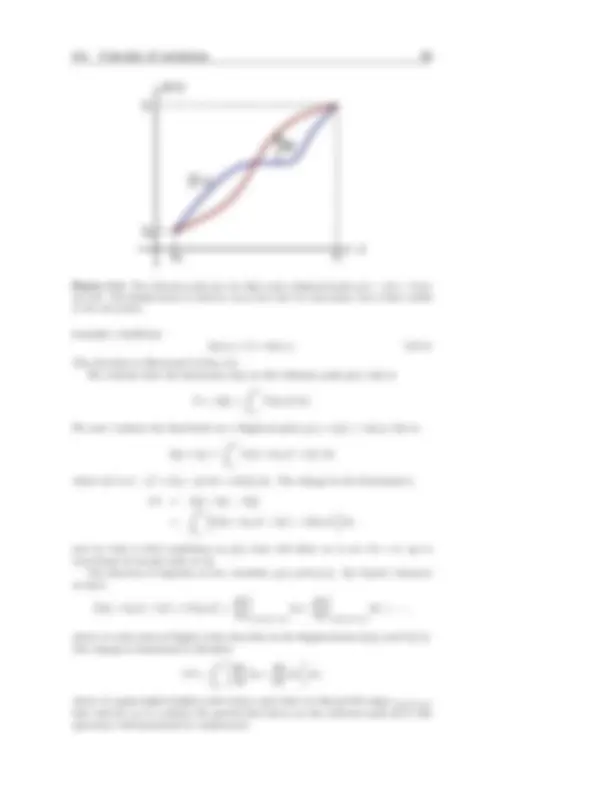
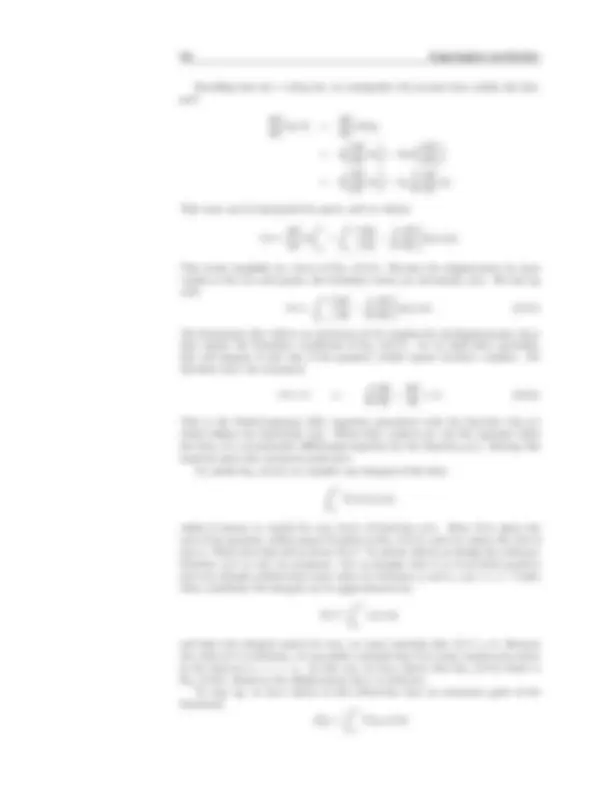
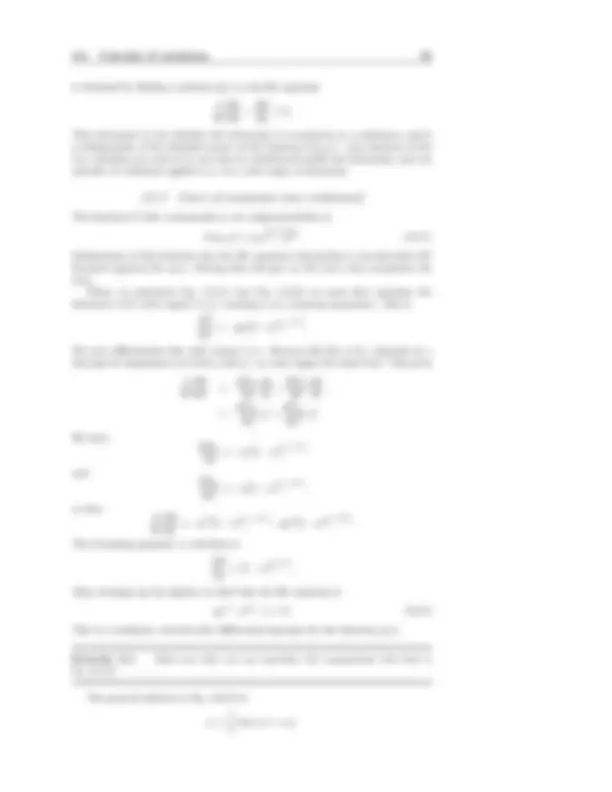
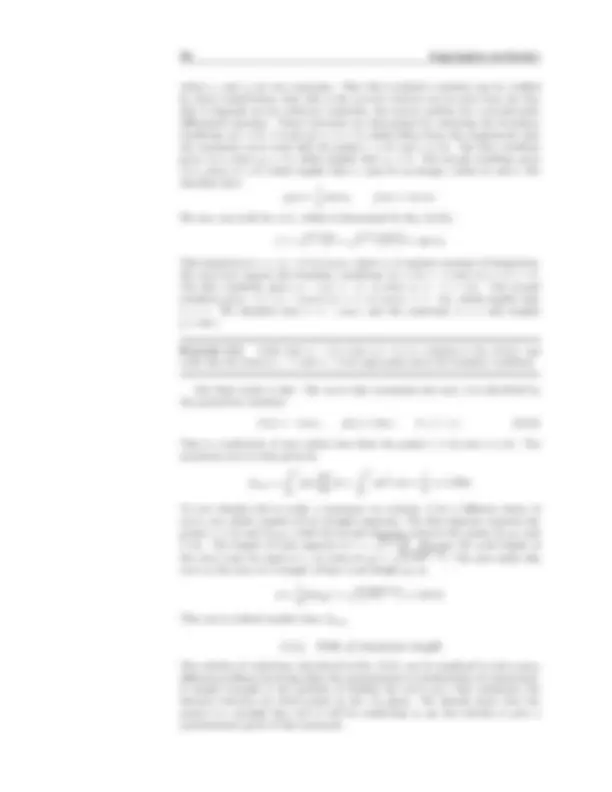

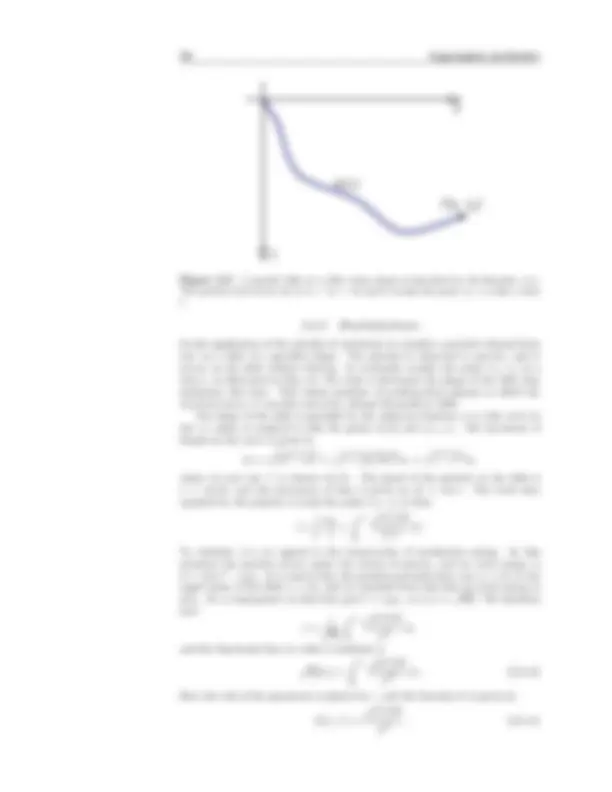
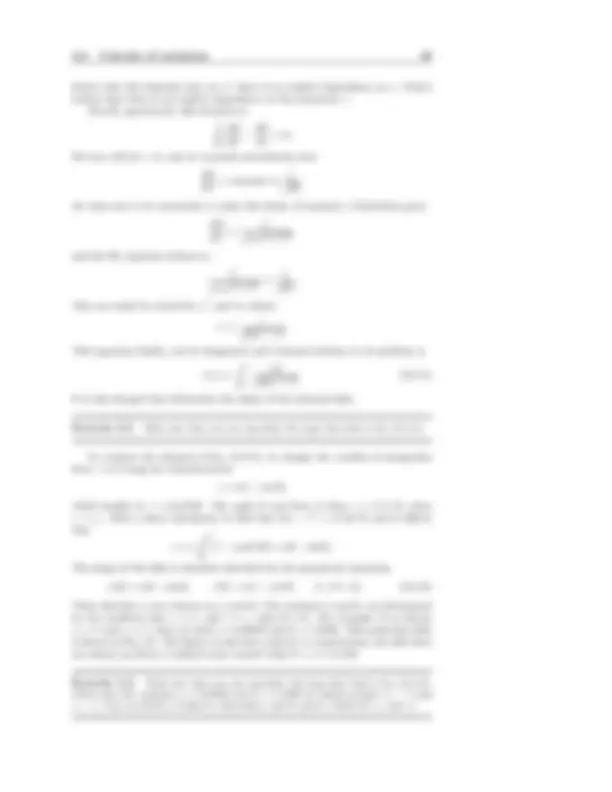
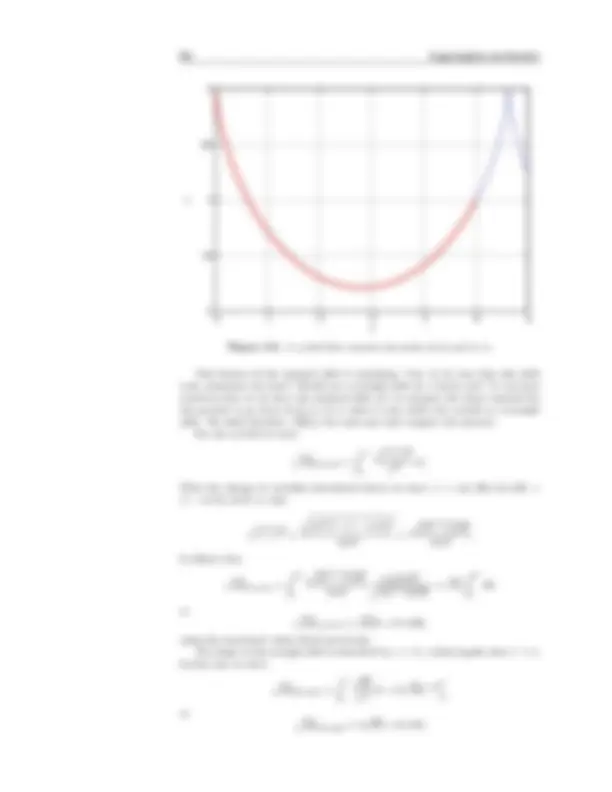
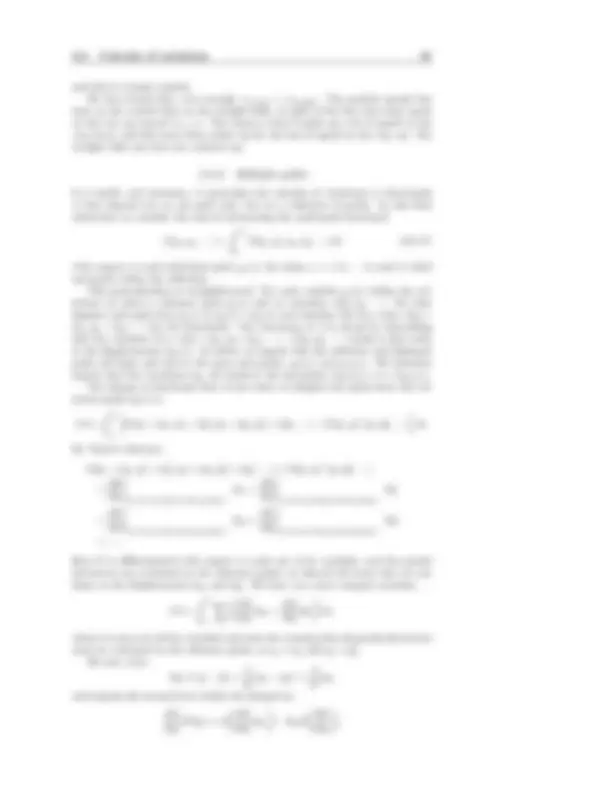
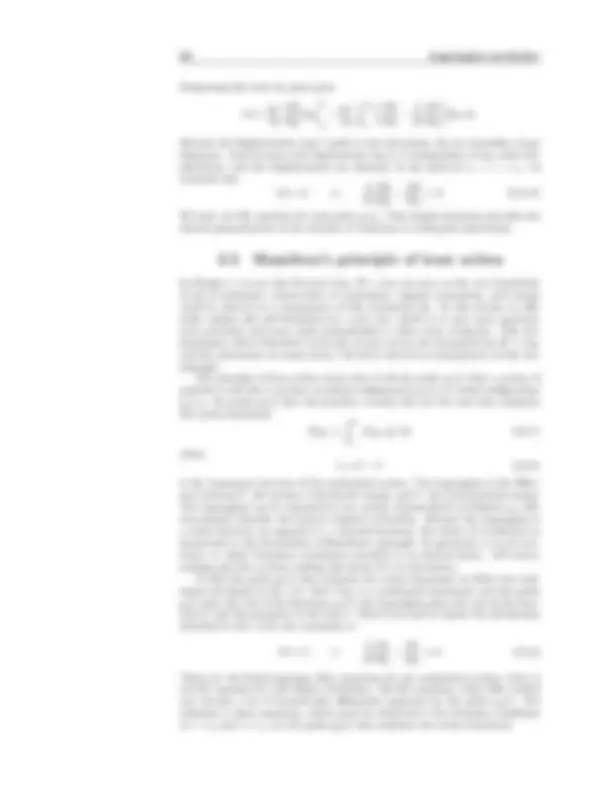
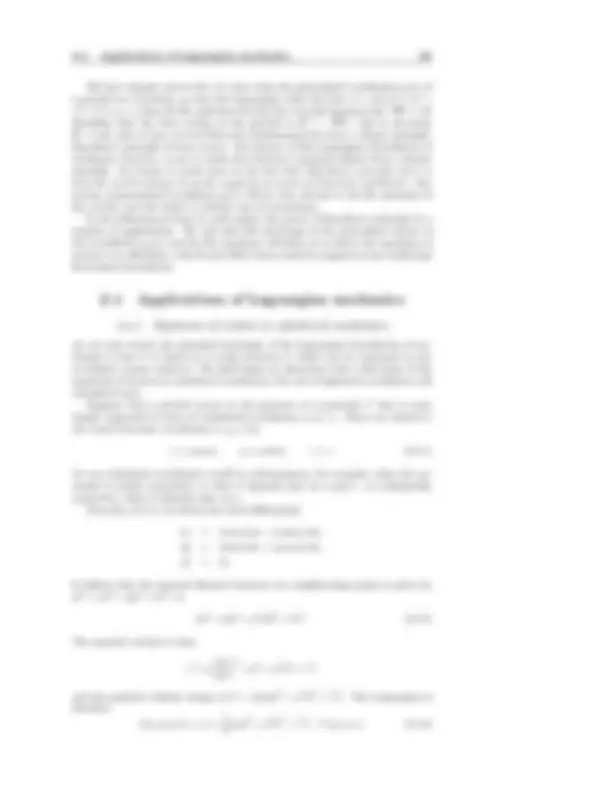
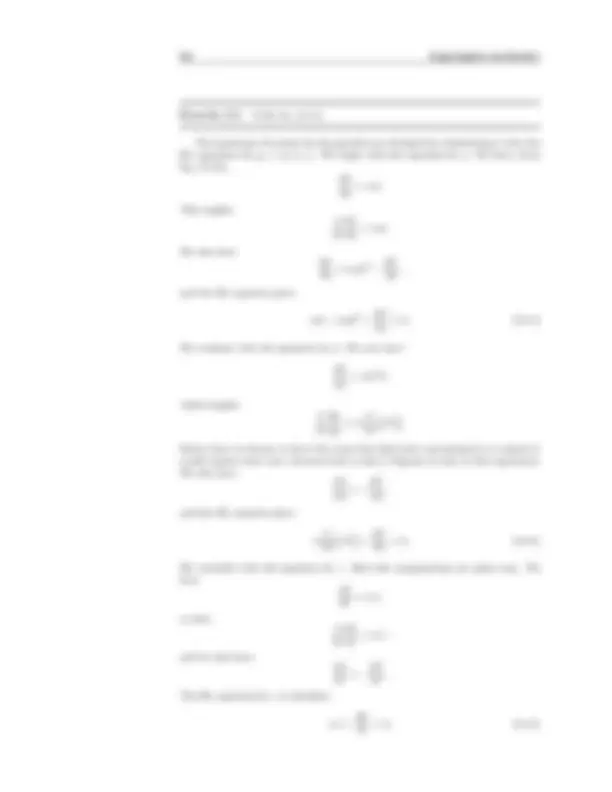
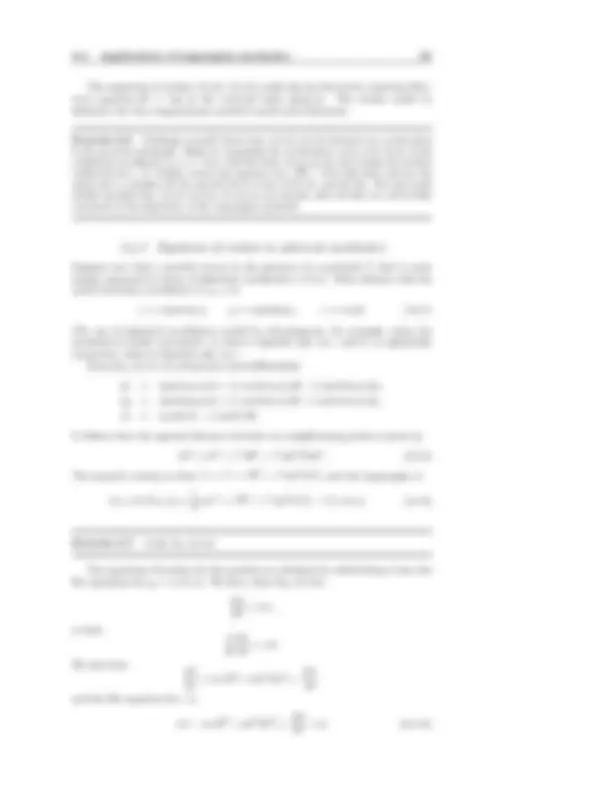
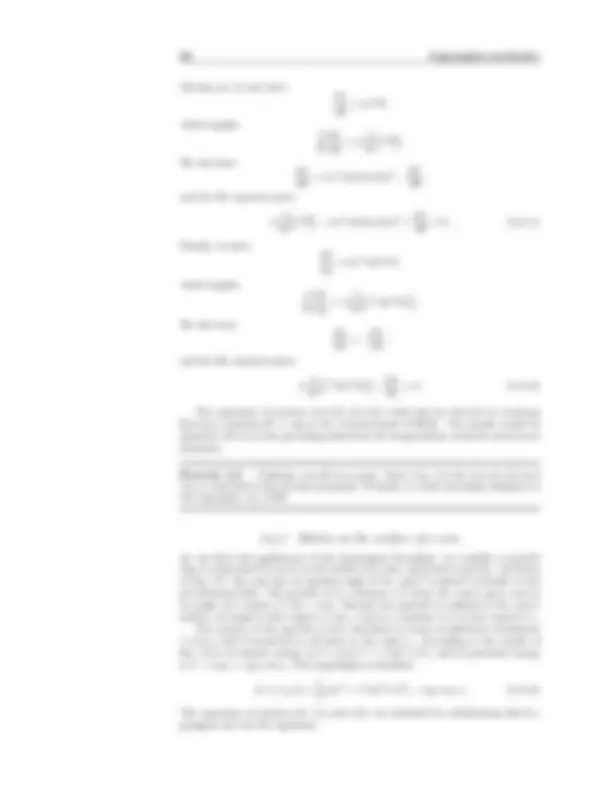
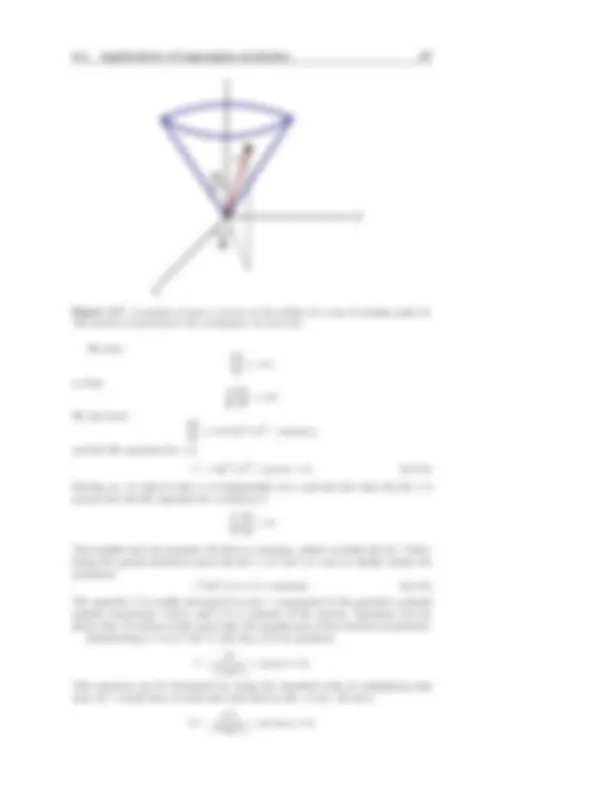
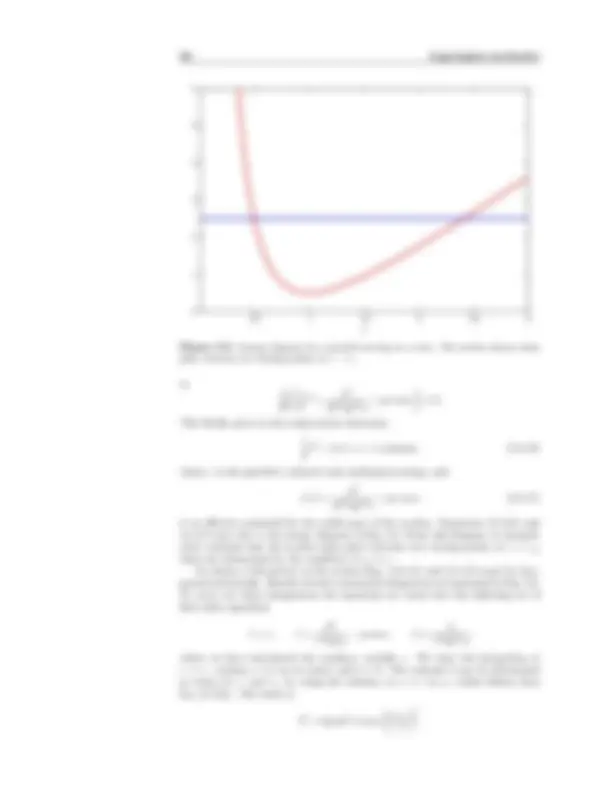
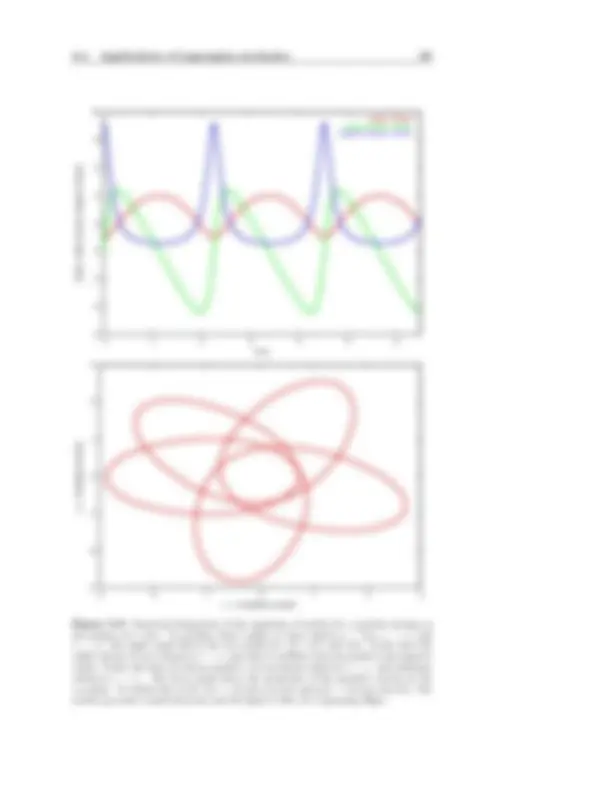
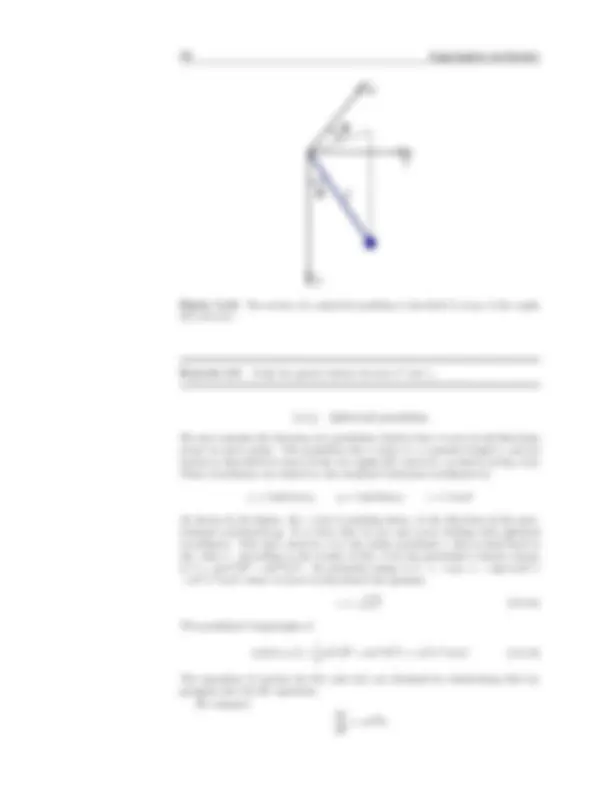
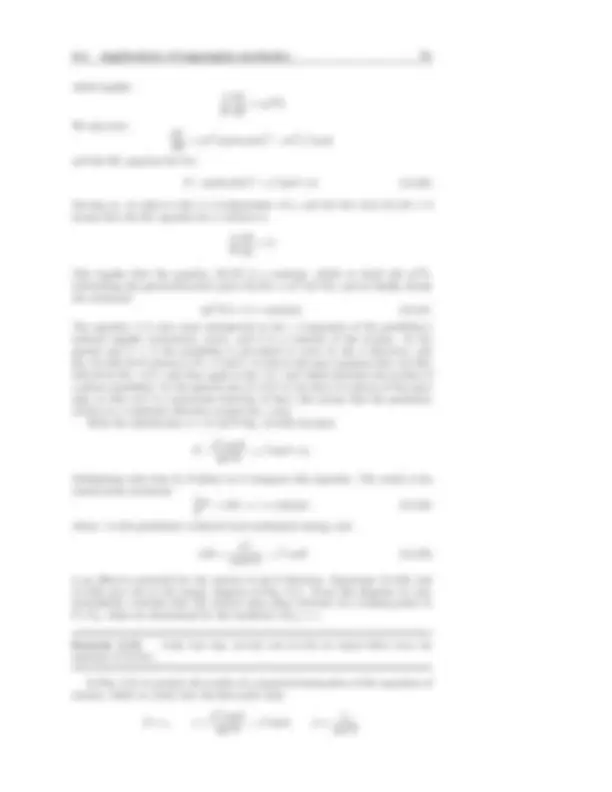
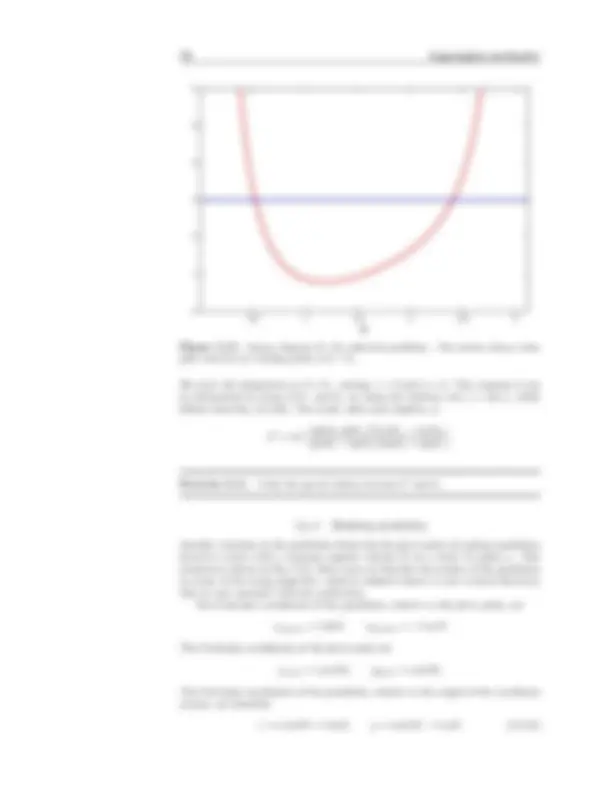
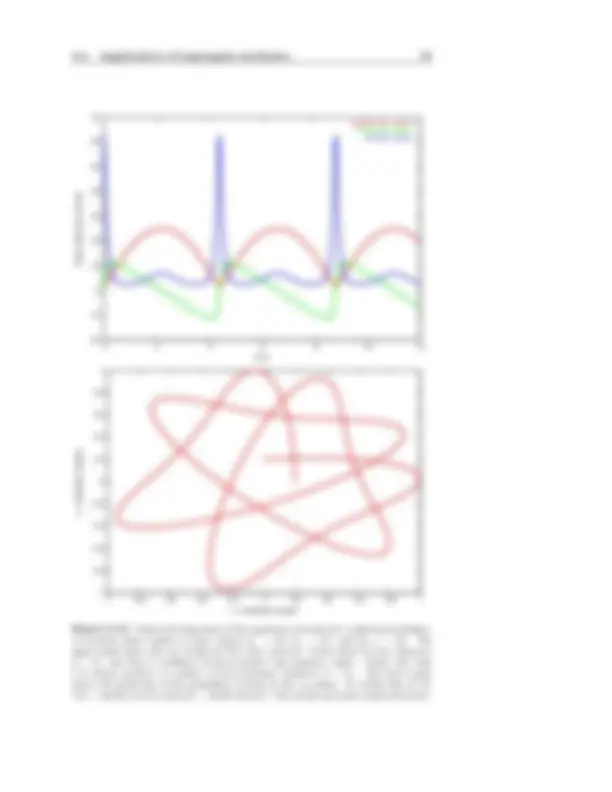
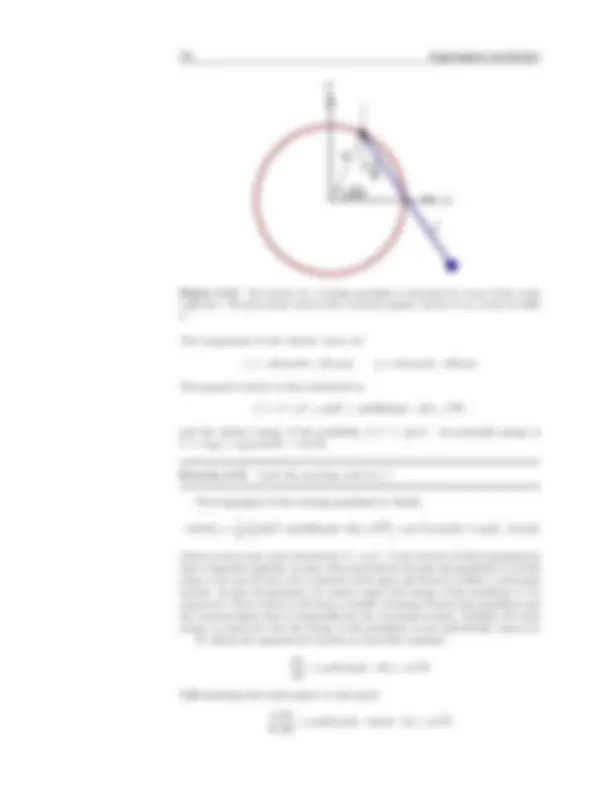

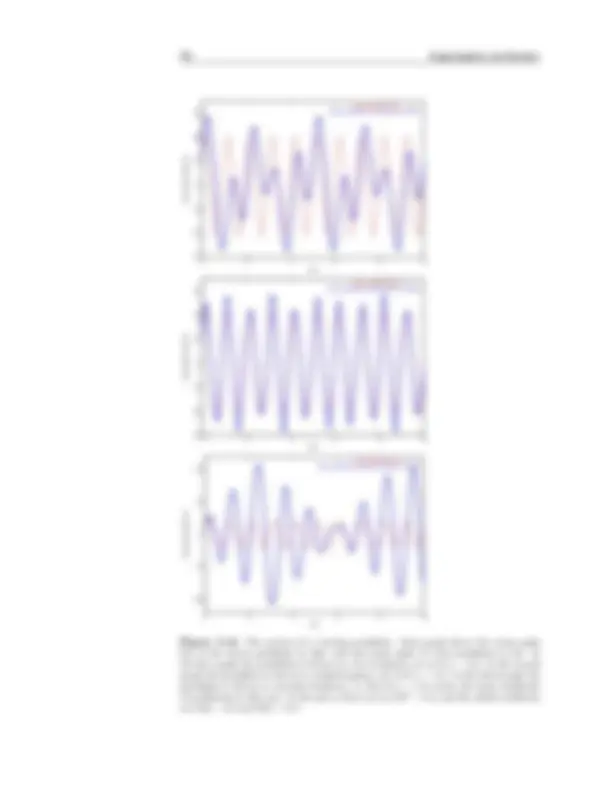
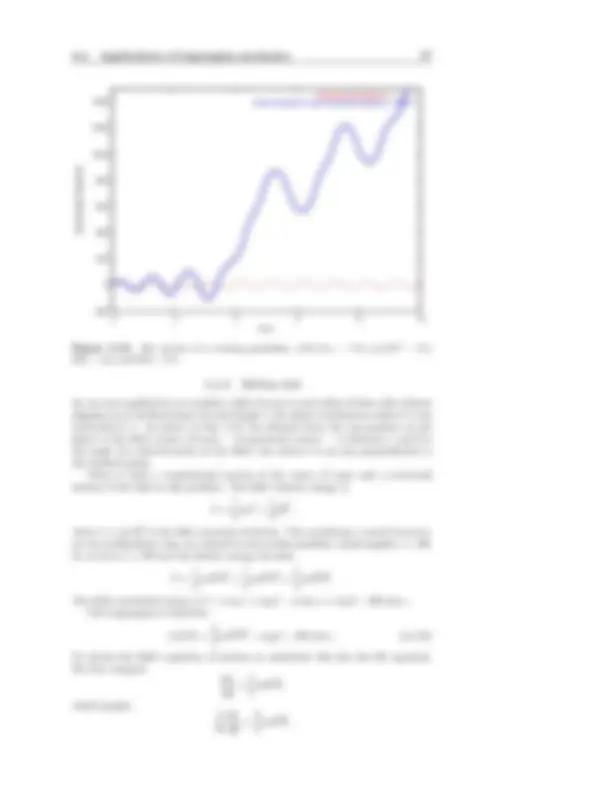
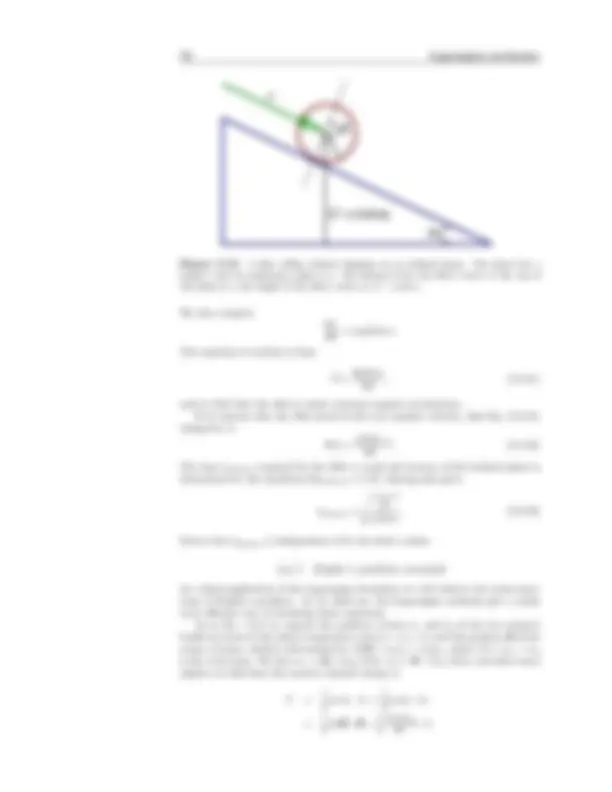
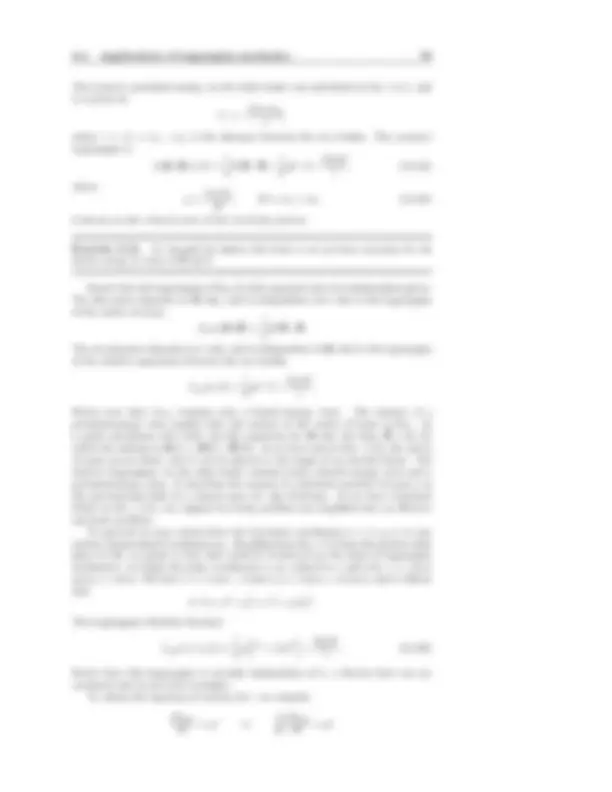
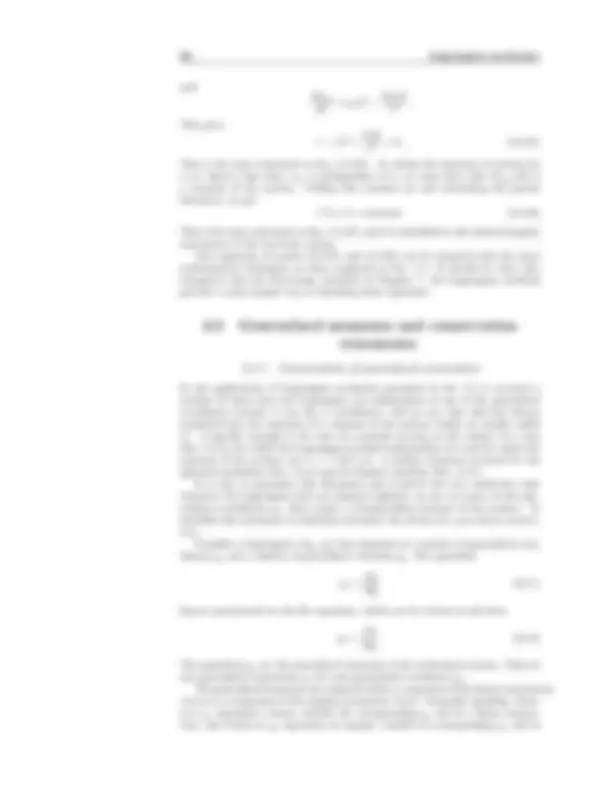
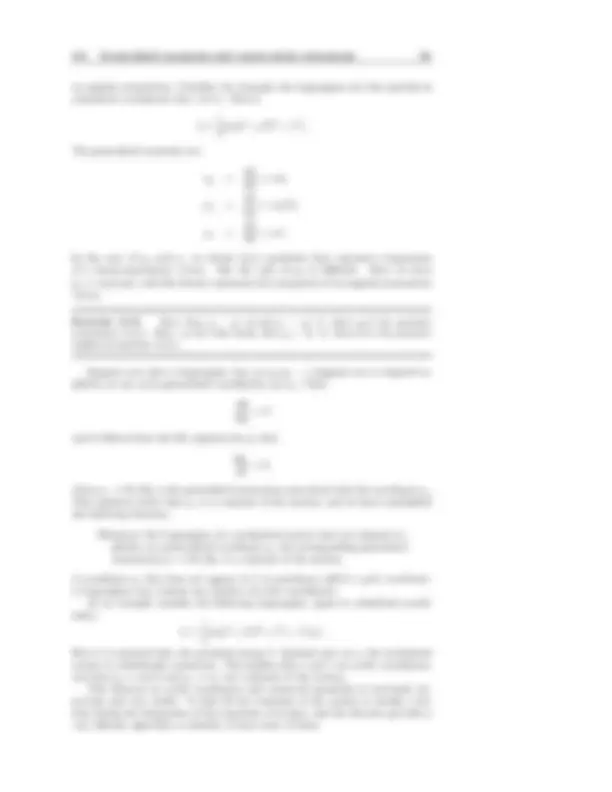
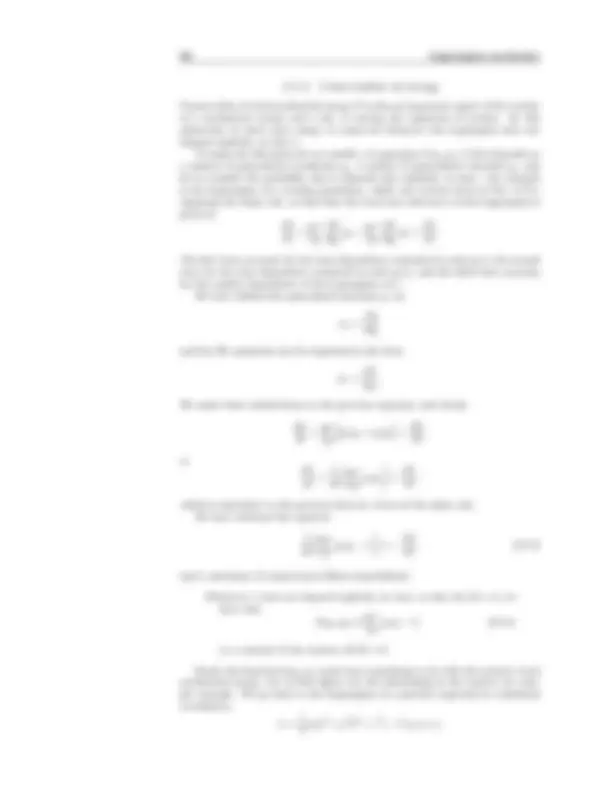
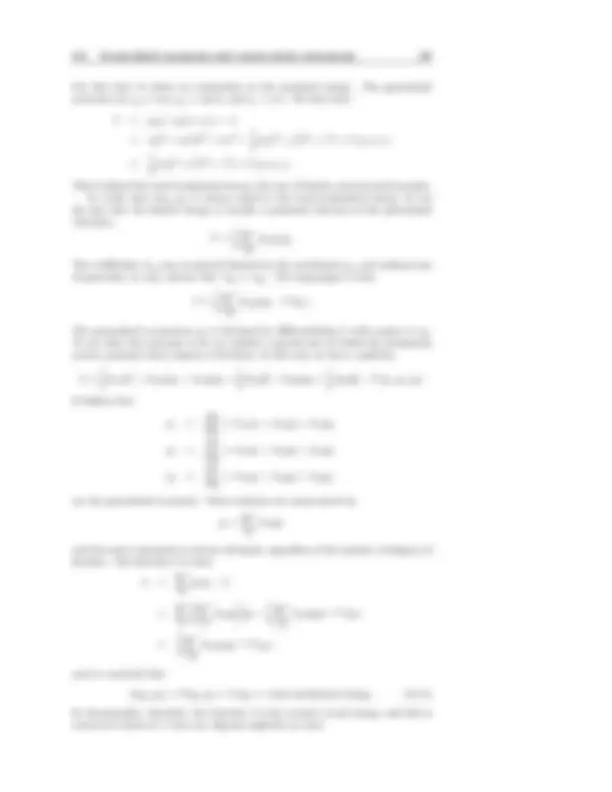
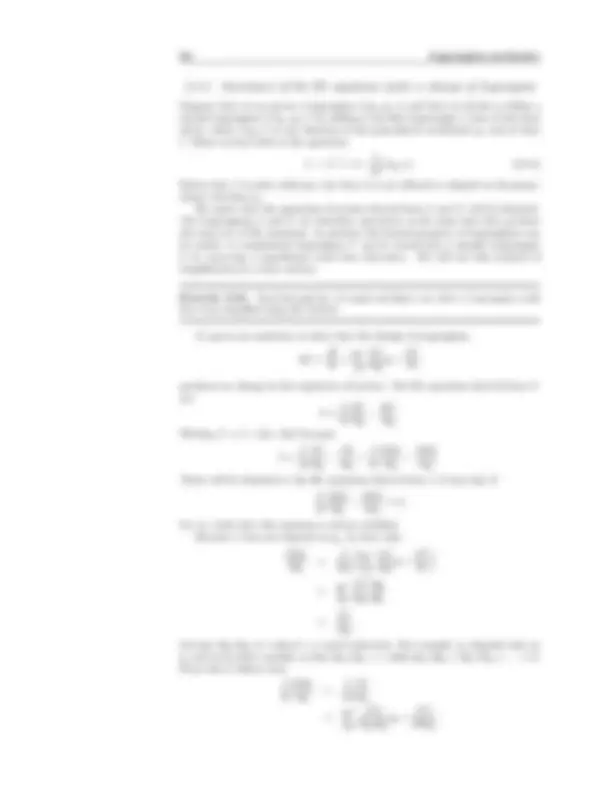
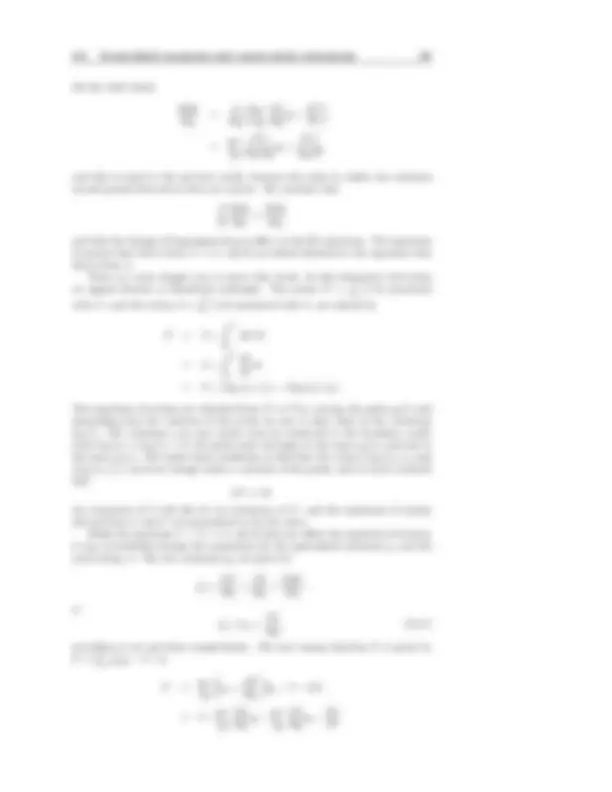
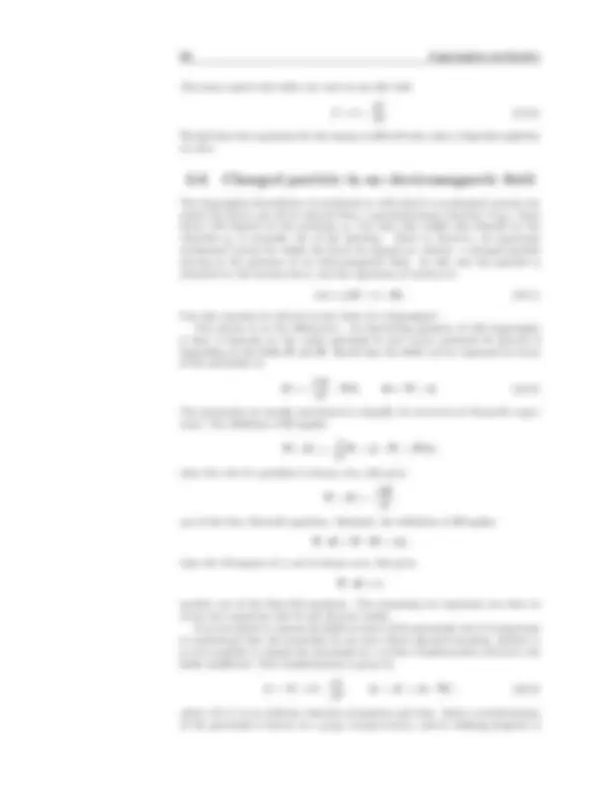
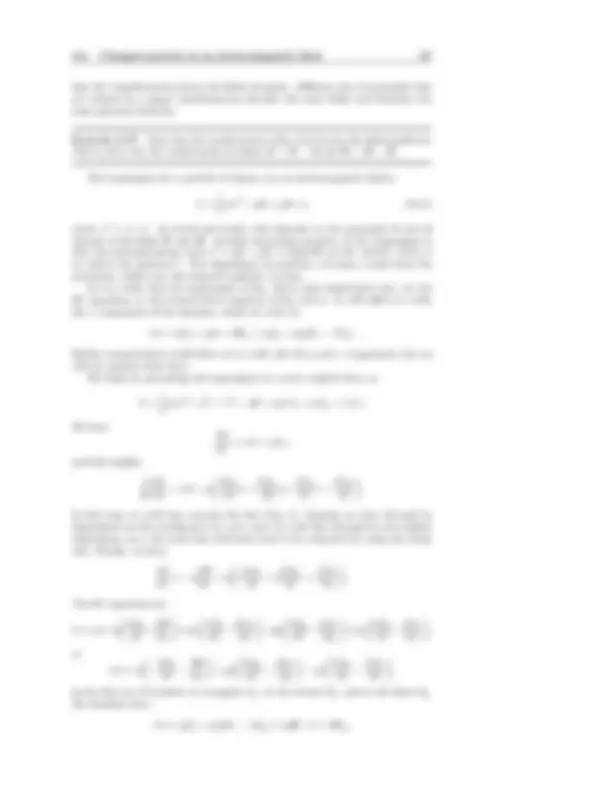
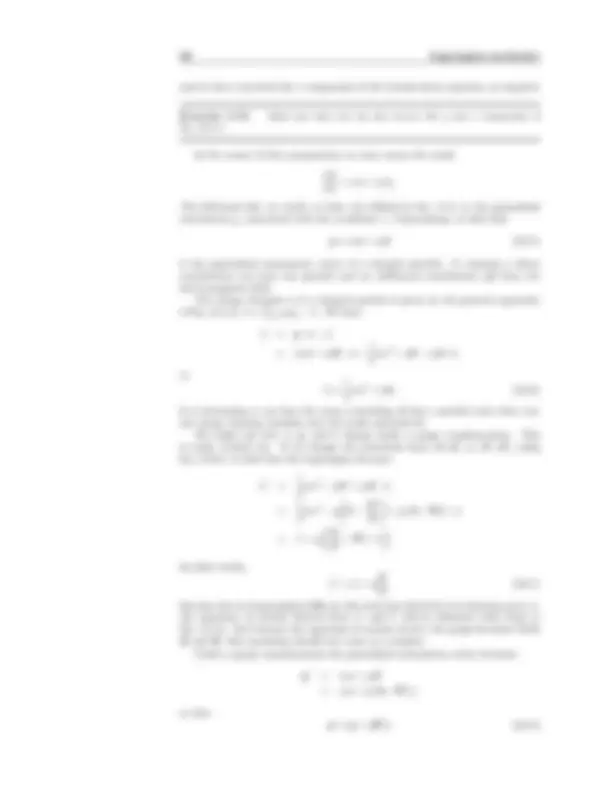
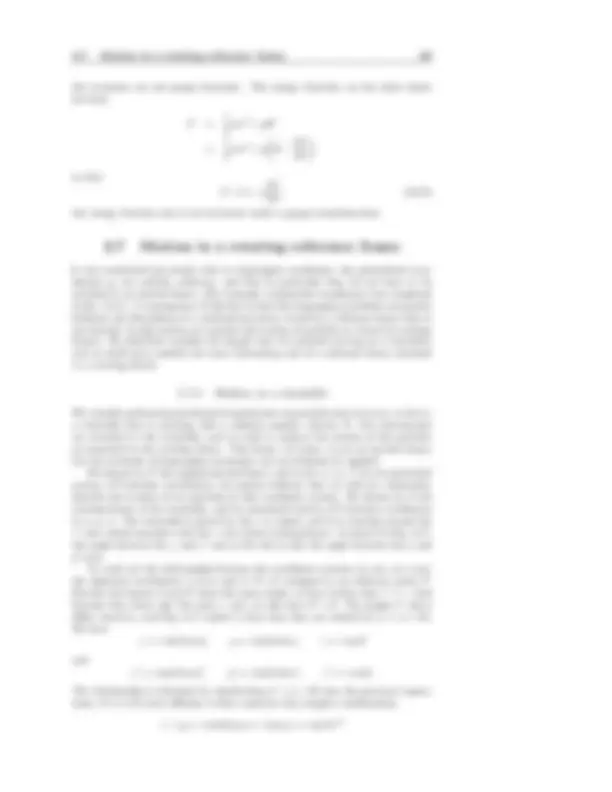
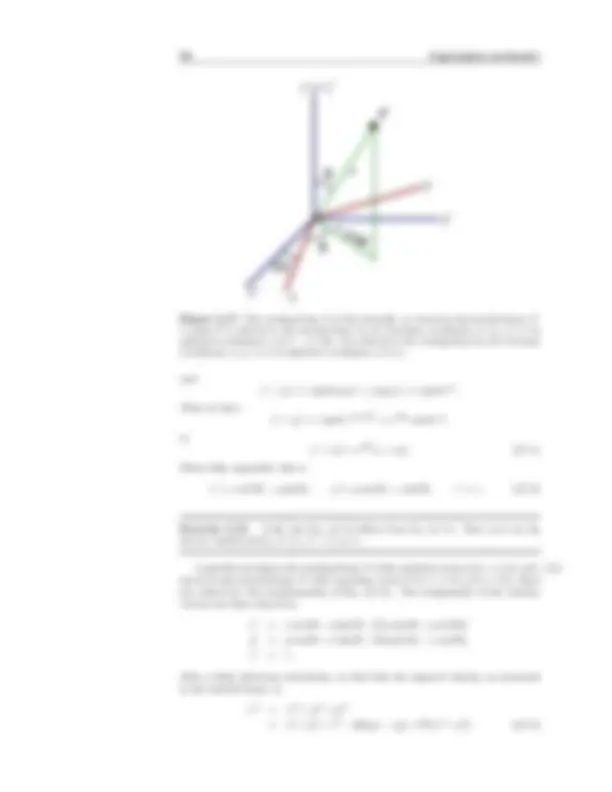
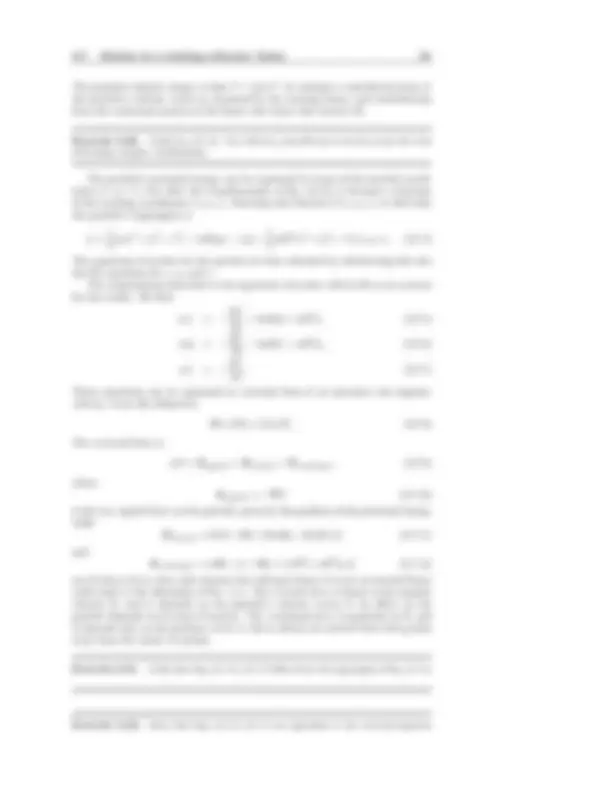
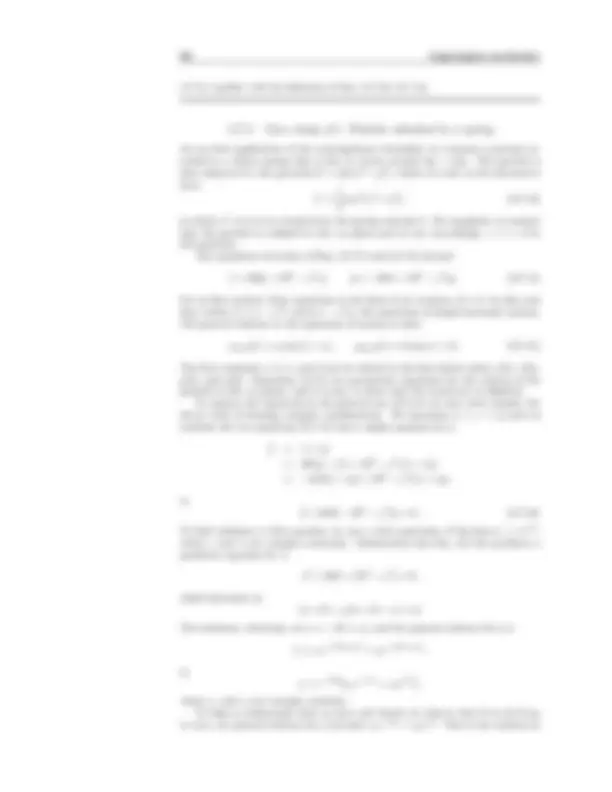

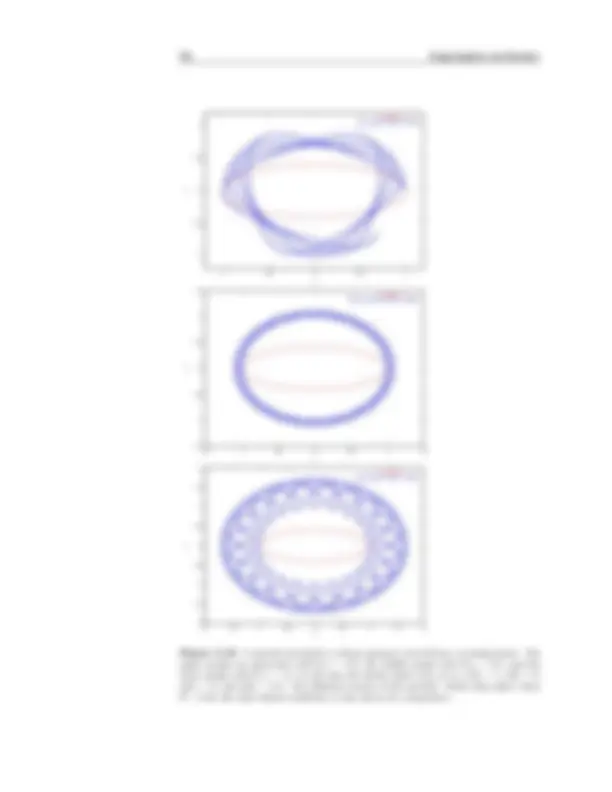
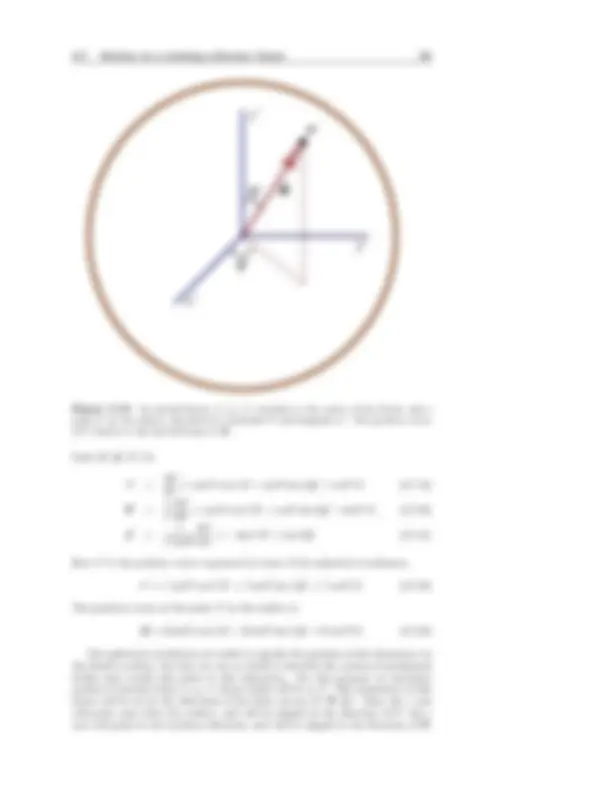


Study with the several resources on Docsity

Earn points by helping other students or get them with a premium plan


Prepare for your exams
Study with the several resources on Docsity

Earn points to download
Earn points by helping other students or get them with a premium plan
Community
Ask the community for help and clear up your study doubts
Discover the best universities in your country according to Docsity users
Free resources
Download our free guides on studying techniques, anxiety management strategies, and thesis advice from Docsity tutors
Advanced Mechanics, Lecture Notes - Eric Poisson, Department of Physics University of Guelph
Typology: Lecture notes
1 / 164

This page cannot be seen from the preview
Don't miss anything!





























































































2 Newtonian mechanics
b
r r
S
S 0
Figure 1.1: Two reference frames, S 0 and S 1 , separated by a displacement b.
with the notation ¨x = d^2 x/dt^2 = ˙vx = ax. Newton’s equation, ma = F , has the mathematical structure of a system of second-order differential equations for the coordinates x(t), y(t), and z(t). To describe the particle’s trajectory, knowing the force, it is necessary to integrate these differential equations. Suppose that we have two reference frames, S 0 and S 1 , separated by a dis- placement b (see Fig. 1.1). Relative to S 1 the position vector of a particle is r 1 ; relative to S 0 it is r 0. The transformation between the two position vectors is clearly r 0 = b + r 1 , or r 1 = r 0 − b. (1.1.6)
Suppose now that S 1 moves relative to S 0 , so that the vector b depends on time. Since the position vectors also depend on time, Eq. (1.1.6) should be written as r 1 (t) = r 0 (t) − b(t). Taking a time derivative produces the transformation between the velocity vectors: v 1 = v 0 − b˙. (1.1.7)
Taking a second time derivative gives us the transformation between the acceleration vectors: a 1 = a 0 − ¨b. (1.1.8)
If S 0 is an inertial frame, then the equations of motion for the particle as viewed in S 0 are ma 0 = F. In S 1 the equations are instead
ma 1 = F − m¨b. (1.1.9)
We see that Newton’s equation is preserved only if ¨b = 0 , that is, if b˙ is a constant vector. In this case S 1 moves relative to S 0 with a constant velocity, and it is also an inertial frame. When, however, S 1 is not inertial, the equations of motion do not take the Newtonian form. We have instead Eq. (1.1.9), which can be rewritten as ma 1 = F + Ffictitious,
with Ffictitious = −m¨b. The second term on the right can be thought of as a fictitious force that arises from the fact that the reference frame is not inertial. A well-known example is the centrifugal force, which arises in a rotating (and therefore non-inertial) frame of reference. We now consider a situation in which S 1 and S 0 are both inertial. We assume, in fact, that they share a common origin O, but that they differ in the orientation of the coordinate axes. A concrete example (see Fig. 1.2) is one in which S 1 is obtained from S 0 by a rotation around the z axis. In this case the basis vectors xˆ 1 and yˆ 1 differ in direction from xˆ 0 and yˆ 0. Similarly, the particle’s coordinates x 1 (t)
1.2 Alternative coordinate systems 3
α
z = z
y
y 0
x (^) x
r
Figure 1.2: The frame S 1 is obtained from S 0 by a rotation around their common z axis.
and y 1 (t) differ from x 0 (t) and y 0 (t). But it is an important fact that the position vector r(t) is not affected by the rotation:
r 1 = x 1 ˆx 1 + y 1 yˆ 1 + z 1 zˆ 1 = x 0 ˆx 0 + y 0 yˆ 0 + z 0 zˆ 0 = r 0.
This conclusion follows simply from the fact that r = r 1 = r 0 is a vector which points from O to the particle, independently of the orientation of the reference frame. So although the basis vectors and the coordinates all change separately under a rotation of the frame, the position vector is invariant. From this observation it follows that v 1 = v 0 = v and a 1 = a 0 = a: the velocity and acceleration vectors also are invariant under a rotation of the reference frame. Similar considerations reveal that the vector F is invariant, and we conclude that the form of Newton’s equation F = ma is not affected by a rotation of the reference frame. (These invariance properties are exactly what motived the formulation of Newton’s mechanics in terms of vectorial quantities.)
Exercise 1.1. Determine how the coordinates x and y, as well as the basis vectors ˆx and y ˆ, change under a rotation around the z axis by an angle α. Then show mathematically that r is invariant under the transformation.
The discussion of the previous section will have made it clear that the Cartesian coordinates (x, y, z) play an important role in Newtonian mechanics. We might even say that they have a preferred status. The same can be said of the associated set of basis vectors xˆ, yˆ, and ˆz. We are aware, however, of situations in which it may be advantageous not to use the Cartesian coordinates, but to switch to another, more convenient system. What happens then to the formulation of our fundamental law,
1.2 Alternative coordinate systems 5
(∂r/∂φ) = r^2 sin^2 φ + r^2 cos^2 φ = r^2 , and to get a unit vector we must divide ∂r/∂φ by r. We conclude that
φ^ ˆ =^1 r
∂r ∂φ
= − sin φ xˆ + cos φ ˆy (1.2.8)
is the desired basis vector.
Exercise 1.2. Check that rˆ · φˆ = 0.
Let us now work out the components of the vectors r, v, and a in the basis (ˆr, φˆ). According to Eqs. (1.2.2) and (1.2.7) we have
r · rˆ =
(r cos φ)xˆ + (r sin φ)ˆy
cos φ xˆ + sin φ yˆ
= r cos^2 φ + r sin^2 φ = r.
Similarly, Eqs. (1.2.2) and (1.2.8) give
r · φˆ =
(r cos φ)xˆ + (r sin φ)ˆy
− sin φ xˆ + cos φ ˆy
= −r sin φ cos φ + r sin φ cos φ = 0.
From these results we infer that r = r rˆ, (1.2.9)
and this expression should not come as a surprise, given the meaning of the quanti- ties involved. Proceeding similarly with the vectors v and a, we find that they are decomposed as v = ˙r rˆ + r φ˙ φˆ (1.2.10)
and
a =
¨r − r φ˙^2
ˆr +
r
d dt
r^2 φ˙
φˆ (1.2.11)
in the new basis. As we have pointed out, the components of r in the polar basis are obvious, and the components of v also can be understood easily: The radial component of the velocity vector must clearly be vr = ˙r, and the tangential compo- nent must be vφ = r φ˙ because the factor of r converts the angular velocity φ˙ into a linear velocity. The components of the acceleration vector are not so easy to interpret. It is im- portant to notice that the radial component of the acceleration vector is not simply ar = ¨r, and the angular component is not simply aφ = φ¨. It is a general observation that the components of the acceleration vector are not simple in nonCartesian coor- dinate systems. It should be observed that the radial component of the acceleration vector contains both a radial part ¨r and a centrifugal part −r φ˙^2 = −v φ^2 /r.
Exercise 1.3. Verify by explicit calculation that Eqs. (1.2.10) and (1.2.11) are correct.
Suppose now that the force F has been resolved in the polar basis (rˆ, φˆ). We have F = Fr ˆr + Fφ φˆ, (1.2.12)
and Newton’s law F = ma breaks down into two separate equations, the radial component
¨r − r φ˙^2 = Fr m
6 Newtonian mechanics
and the angular component d dt
r^2 φ˙
rFφ m
These are the equations of motion for a particle subjected to a force F , expressed in polar coordinates (r, φ). When, for example, Fφ = 0 and the force is purely radial, then according to Eq. (1.2.14), r^2 φ˙ = rvφ is a constant of the motion. When, in addition, ¨r = 0 and the particle travels on a circle r = constant, then Eq. (1.2.13) reduces to r φ˙^2 = v^2 φ/r = −Fr /m; this is the familiar equality between the centrifugal acceleration v^2 φ/r and (minus) the radial component of the force (divided by the mass).
Exercise 1.4. Consider the spherical coordinates (r, θ, φ) defined by x = r sin θ cos φ, y = r sin θ sin φ, and z = r cos θ. Show that in this alternative coordinate system, the basis vectors are given by
r ˆ = ∂r ∂r = sin θ cos φ ˆx + sin θ sin φyˆ + cos θ zˆ,
θ^ ˆ = 1 r
∂r ∂θ = cos θ cos φ ˆx + cos θ sin φyˆ − sin θ zˆ,
φ^ ˆ = 1 r sin θ
∂r ∂φ = − sin φ ˆx + cos φyˆ.
Verify that these vectors are all orthogonal to each other.
In this section we explore some consequences of the law F = ma when it applies to a single particle.
1.3.1 Line integrals
We begin with a review of some relevant mathematics. Let A be a vector field in three-dimensional space. (A vector field is a vector that is defined in a region of space and which may vary from position to position in that region.) Let C be a curve in three-dimensional space, and let ds be the displacement vector along the curve. The displacement vector is defined so that ds is everywhere tangent to the curve, and such that its norm ds = |ds| is equal to the distance between two neighbouring points on the curve; the total length of the curve is the integral
C ds. Now introduce (^) ∫ 2
1
A · ds,
the line integral of the vector field A between point 1 and point 2 on the curve C. Such integrals occur often in physics. In the present context the force F will play the role of the vector field A, and the particle’s trajectory will play the role of the curve C; we then have ds = dr = vdt and the line integral will be the work done by the force as the particle moves from point 1 to point 2. It is a fundamental theorem of vector calculus that if a line integral between two fixed points in space does not depend on the curve joining the points, then the vector field A must be the gradient ∇f of some scalar function f. This theorem is essentially a consequence of the identity
∫ (^2)
1
∇f · ds =
1
df ds
ds = f (2) − f (1) independently of the curve,
8 Newtonian mechanics
with a parameter θ running from θ = 0 to θ = π. Now we have dx = sin θ dθ, dy = cos θ dθ, and the displacement vector on C′^ is ds = (sin θ dθ, cos θ dθ). The vector field evaluated on C′^ is A = (− cos θ, sin θ), and we have A · ds = 0. The line integral is obviously (^) ∫
C′
A · ds = 0
for this choice of curve also. You might experiment with other curves, and invariably you will find that
A · ds = 0 for all curves C that link the points (− 1 , 0) and (1, 0) in the x-y plane.
Exercise 1.5. Evaluate the line integral
R C′′^ A^ ·^ ds^ for the vector field^ A^ = (x, y), for a curve C′′^ that consists of a line segment that goes from (− 1 , 0) to (0, −1) and another line segment that goes from (0, −1) to (1, 0).
Because the line integral is independent of the path, A must be the gradient of a scalar function f. We must have Ax = ∂f /∂x = x and Ay = ∂f /∂y = y. Integrating the first equation gives
f =
x^2 + unknown function of y,
where we indicate that the “constant of integration” can in fact depend on y, which is held fixed during integration with respect to x. Integrating instead the second equation gives
f =
y^2 + unknown function of x.
These results are compatible only if the unknown function of y is in fact 12 y^2 , and the unknown function of x is 12 x^2. We may still add a true constant to the result, and we find that the function f must be given by
f =
x^2 + y^2
where f 0 = constant. It is then easy to verify that ∇f = A. It now becomes clear why the line integral had to be zero for any path linking the points (− 1 , 0) and (1, 0): Irrespective of the path the integral has to be equal to f (1, 0) − f (− 1 , 0) = ( 12 + f 0 ) − ( 12 + f 0 ) = 0, as we have found for C and C′.
1.3.2 Conservation of linear momentum
We now proceed with our exploration of the consequences of the dynamical law F = ma. The first main consequence follows immediately from Newton’s equation: In the absence of a force acting on the particle, the linear momentum p = mv is a constant vector. This follows from the alternative expression of Newton’s law,
dp dt
if F = 0 then dp/dt = 0 and the vector p must be constant. We therefore have conservation of (linear) momentum in the absence of an applied force.
1.3.3 Conservation of angular momentum
Relative to a choice of origin O, the angular momentum of a particle at position r is defined by L = r × p = mr × v. (1.3.2)
1.3 Mechanics of a single body 9
The angular-momentum vector changes if the origin of the reference frame is shifted to a different point in space. The torque acting on the particle is defined by
N = r × F. (1.3.3)
(This is also called the moment of force.) We have, as a consequence of Newton’s equation, dL/dt = m(v ×v +r ×a) = r ×F , since the first term obviously vanishes. This gives dL dt
and we obtain a statement of angular-momentum conservation: In the absence of a torque acting on the particle, the angular momentum L is a constant vector. It is clear that N = 0 when F = 0 , but it is possible to have a vanishing torque even when F 6 = 0 ; this occurs when F always points in the direction of r.
1.3.4 Conservation of energy
The statements of conservation of linear and angular momenta were easy to formu- late and prove, but these statements hold only in very rare circumstances: F must vanish for p to be constant, and N must vanish for L to be constant. As we shall see, the statement of conservation of energy is more difficult to make, but it holds much more widely. Let a particle move from point 1 to point 2 under the action of a force F. The total work done on the particle by the force, as it moves from 1 to 2, is by definition the line integral
W 12 =
1
F · dr, (1.3.5)
where dr = v dt is the displacement vector along the particle’s trajectory. As we shall now infer, the line integral is equal to the total change in the particle’s kinetic energy,
T =
mv^2 = kinetic energy, (1.3.6)
as it moves from 1 to 2. We have introduced the notation v^2 = v · v = |v|^2. The statement of the work-energy theorem is thus
W 12 = T (2) − T (1). (1.3.7)
To prove this we substitute F = mdv/dt and dr = v dt inside the line integral of Eq. (1.3.5). We get
W 12 = m
1
dv dt
· v dt.
The integrand is
dv dt
· v =
dvx dt
vx +
dvy dt
vy +
dvx dt
vy
d dt v^2 x +
d dt v^2 y +
d dt v^2 z
d dt
v x^2 + v y^2 + v z^2
d dt
v^2
and the line integral becomes
1
d dt
mv^2
dt =
1
dT dt
dt =
1
dT = T (2) − T (1).
1.3 Mechanics of a single body 11
mechanical energy E is conserved when a particle moves under the action of the gravitational force. An example of a force that does not derive from a potential is the frictional force
Ffriction = −kv, (1.3.12)
where k > 0 is the coefficient of friction; this force acts in the direction opposite to the particle’s motion and exerts a drag. It is indeed easy to see that Ffriction cannot be expressed as the gradient of a function of r. (The expression Vfriction = kv · r might seem to work, but this potential depends on both r and v, and this is not allowed.) This implies that in the presence of a frictional force, the total mechanical energy of a particle is not conserved. The reason is that the friction produces heat, which is rapidly dissipated away; because this heat comes at the expense of the particle’s mechanical energy, E cannot be conserved. Energy conservation as a whole, of course, applies: the amount by which E decreases matches the amount of heat dissipated into the environment. It is important to understand that the work-energy theorem of Eq. (1.3.7) is always true, whether or not the force F derives from a potential. But whether E is conserved or not depends on this last property: When F = −∇V we have dE/dt = 0 and the total mechanical energy is conserved; but E is not in general conserved when the force does not derive from a potential.
1.3.5 Case study #1: Particle in a gravitational field
To illustrate the formalism presented in the preceding subsections we now review the problem of determining the motion of a particle in a gravitational field. The force is given by Eq. (1.3.10), F = mg = mg(0, 0 , −1), and the potential by Eq. (1.3.11), V = mgz. The equations of motion are
x¨ = 0, y¨ = 0, z¨ = −g. (1.3.13)
These are easily integrated:
x(t) = x(0) + vx(0)t, y(t) = y(0) + vy (0)t, z(t) = z(0) + vz (0)t −
gt^2. (1.3.14) These equations describe parabolic motion. Here x(0), y(0), z(0) are the positions at time t = 0, and vx(0), vy (0), and vz (0) are the components of the velocity vector at t = 0; these quantities are the initial conditions that must be specified in order for the motion to be uniquely known at all times. The velocity vector at time t is obtained by differentiating Eqs. (1.3.14); we get
vx(t) = vx(0), vy (t) = vy (0), vz (t) = vz (0) − gt. (1.3.15)
With Eqs. (1.3.14) and (1.3.15) we have sufficient information to compute the total mechanical energy E = T + V of the particle. After some simple algebra we obtain
m
vx(0)^2 + vy (0)^2 + vz (0)^2
for all times t; this is clearly a constant of the motion.
Exercise 1.6. Verify that Eqs. (1.3.14) really give the solution to the equations of motion r¨ = g. Then compute E and make sure that your result agrees with Eq. (1.3.16).
12 Newtonian mechanics
1.3.6 Case study #2: Particle in a gravitational field subjected to air
resistance
We now suppose that the particle is subjected to both a gravitational force mg and a frictional force −kv supplied by the ambient air. For convenience we set k = m/τ , thereby defining the quantity τ , and the total applied force is
F = m(g − v/τ ). (1.3.17)
The equations of motion are ma = F , or a = g − v/τ , or again
r ¨ + r˙/τ = g. (1.3.18)
We assume that the particle is released from a height h with a zero initial velocity. The initial conditions are therefore z(0) = h and ˙z(0) = 0. We assume also, for simplicity, that there is no motion in the x and y directions. The only relevant component of Eq. (1.3.18) is therefore
v˙ + v/τ = −g, (1.3.19)
where we have set v = z˙. To arrive at Eq. (1.3.19) we have used the fact that g = g(0, 0 , −1). Our task is to solve the first-order differential equation of Eq. (1.3.19). We use the method of variation of parameters. Suppose first that g = 0. In this case the equation becomes dv/dt = −v/τ or dv/v = −dt/τ. This is easily integrated, and we get ln(v/c) = −t/τ , or v = c e−t/τ^. This is the solution for g = 0, and the constant of integration c is the solution’s parameter. To handle the case g 6 = 0 we allow c to depend on time — we vary the parameter — and we substitute the trial solution
v(t) = c(t)e−t/τ
into Eq. (1.3.19). We have ˙v = ˙ce−t/τ^ − v/τ and −g = ˙v + v/τ = ˙ce−t/τ^. The differential equation for c(t) is therefore
c˙ = −get/τ^ ,
so that c(t) = −gτ et/τ^ + c 0 ,
where c 0 is a true constant of integration. The result for v(t) is then
v(t) = −gτ + c 0 e−t/τ^.
To determine c 0 we invoke the initial condition v(0) = 0. Because v(0) = −gτ + c 0 we have that c 0 = gτ. Our final answer is therefore
v(t) = −gτ
1 − e−t/τ^
This is ˙z, the z component of the particle’s velocity vector. Integrating Eq. (1.3.20) gives z(t), the position of the particle as a function of time.
Exercise 1.7. Integrate Eq. (1.3.20) and obtain z(t). Make sure to impose the initial condition z(0) = h.
Equation (1.3.20) simplifies when t is much smaller than τ = m/k. At such early times, when t/τ ≪ 1, the exponential is well approximated by e−t/τ^ ≃ 1 − t/τ and Eq. (1.3.20) becomes v(t) ≃ −gt,
14 Newtonian mechanics
pulls in the rod’s direction. The geometry of the problem suggests that it might be a good idea to involve the polar coordinates introduced in Sec. 1.2. Adapting the notation somewhat, we express the Cartesian coordinates x and z of the mass m in terms of the new coordinates r and θ; the relationship is
x = r sin θ, z = r cos θ. (1.3.21)
At a later stage of the calculation we will incorporate the fact that the distance r between m and the origin of the coordinate system is constant: r = ℓ. For the moment, however, we shall pretend that r is free to change with time. The polar coordinates (r, θ) come with the basis of unit vectors ˆr and θˆ, with
ˆr = ∂r ∂r
= sin θ xˆ + cos θ zˆ
and
θ^ ˆ =^1 r
∂r ∂θ
= cos θ ˆx − sin θ zˆ,
where r(r, θ) = r sin θ xˆ + r cos θ zˆ is the position vector expressed in terms of the polar coordinates. The unit vector rˆ points in the direction of increasing r (always away from the origin), while the unit vector θˆ points in the direction of increasing θ. As we have seen in Sec. 1.2, the acceleration vector of the mass m can be expressed in the polar coordinates and resolved in the new basis vectors. Repeating the calculations carried out there, we find
a = (¨r − r θ˙^2 ) ˆr +
r
d dt
(r^2 θ˙) θˆ. (1.3.22)
The net force acting on the mass m is F = T + mg, the vectorial sum of the tension and gravitational forces, respectively. Because the tension is directed along the rod, we have T = −T rˆ, with T denoting the magnitude of the tension. The force of gravity, on the other hand, is directed along the z direction, and we have mg = mg zˆ. Resolving this in the new basis (Fig. 1.5), we have mg = mg cos θ ˆr − mg sin θ θˆ, and the net force is
F = (−T + mg cos θ) ˆr − mg sin θ θˆ. (1.3.23)
Equating this to ma produces
m(¨r − r θ˙^2 ) = −T + mg cos θ,
r
d dt
(r^2 θ˙) = −g sin θ,
the equations of motion for the pendulum. These equations simplify considerably when we finally incorporate the fact that r = ℓ and does not change with time (so that ˙r = ¨r = 0). The first equation gives us an expression for the tension: T = m(ℓ θ˙^2 + g cos θ). The second equation reduces to ℓθ¨ = −g sin θ, or θ¨ + ω^2 sin θ = 0, (1.3.24)
where ω =
g/ℓ (1.3.25)
has the dimensions of inverse time (or frequency).
Exercise 1.8. Make sure that you can reproduce all the algebra that goes into the derivation of Eqs. (1.3.24) and (1.3.25).
Exercise 1.9. Equation (1.3.24) can also be derived on the basis of Eq. (1.3.4), dL/dt = N , where L = mr × v is the pendulum’s angular momentum and N = r × F
1.3 Mechanics of a single body 15
the net torque acting on it. Work through the details and verify that this equation does indeed lead to Eq. (1.3.24). This method of derivation does not require the new basis of unit vectors; all calculations can be carried out in the Cartesian basis.
The second-order differential equation of Eq. (1.3.24) determines the motion of the pendulum. It can immediately be integrated once with respect to time. The trick is to multiply Eq. (1.3.24) by θ˙; this gives
θ¨ θ˙ + (ω^2 sin θ) θ˙ = 0.
Now note that
θ¨ θ˙ =^1 2
d dt
θ˙^2
and
(sin θ) θ˙ = −
d dt cos θ.
We therefore have d dt
θ˙^2 − ω^2 cos θ
or 1 2 θ˙^2 − ω^2 cos θ = ε = constant. (1.3.26)
This is a first-order differential equation for θ(t). It seems intuitively plausible that the conserved quantity ε should have some- thing to do with the pendulum’s total energy E. This is indeed the case. The kinetic energy is T = 12 m( ˙x^2 + ˙z^2 ) = 12 mℓ^2 θ˙^2 , according to our previous results. The po- tential energy associated with the gravitational force is V = −mgz = −mgℓ cos θ = −mℓ^2 ω^2 cos θ, where we have used Eq. (1.3.25). The potential energy associated with the rod’s tension is zero: The tension always acts in the rod’s direction, which is always perpendicular to the direction of the motion; the tension does no work on the pendulum. We finally have E = T + V = mℓ^2 ( 12 θ˙^2 − ω^2 cos θ), or
E = mℓ^2 ε. (1.3.27)
We shall call ε the pendulum’s reduced energy. Similarly, we shall call 12 θ˙^2 the reduced kinetic energy and ν(θ) ≡ −ω^2 cos θ the reduced potential energy. The qualitative features of the pendulum’s motion can be understood without further calculation, purely on the basis of the following graphical construction. We draw an energy diagram, a plot of the reduced potential energy ν(θ) = −ω^2 cos θ as a function of θ, together with the constant value of the reduced energy ε (see Fig. 1.6). According to Eq. (1.3.26), which we rewrite as
1 2
θ˙^2 = ε − ν(θ), ν(θ) = −ω^2 cos θ, (1.3.28)
the difference between ε and ν(θ) is equal to the reduced kinetic energy 12 θ˙^2. For motion to take place this difference must be positive, and a quick examination of the diagram reveals immediately the regions for which ε − ν(θ) ≤ 0. Motion is possible within these regions, and impossible outside. For example, when ε < ω^2 we see that the motion of the pendulum takes place between the two well-defined limits θ = ±θ 0 ; motion is impossible beyond these points. This situation corresponds to ordinary pendulum motion: The weight oscil- lates back and forth around the horizontal axis (θ = 0), with an amplitude θ 0. The diagram reveals that the angular velocity | θ˙| is maximum when the weight crosses